Security cameras raise concerns
Jacques Abou-Rizk, Charlotte Robertson Contributing Editors
Over the past couple of months, some Vassar students have noticed new security cameras around campus, including in spaces between Noyes House and Gordon Commons, as well as areas by the Thompson Memorial Library and Rockefeller Hall. Dean of the College Carlos Alamo confirmed in a written correspondence with The Miscellany News that the College has incrementally increased security camera coverage since the armed break-in of a Town House (TH) in 2019. He wrote that this semester, the College has received reports of unknown individuals loitering around the Terrace Apartments (TAs) at night. “Cameras are considered a basic and essential investigative tool, especially as it relates to our ability to address harm when it occurs on our campus.”
Some students, however, have expressed concern regarding the lack of transparency around the use of security footage. Simon Lewis ’25, who witnessed workers installing a camera outside of Gordon Commons in November, thinks that the College should inform students about the increase of security cameras on campus. “I don’t remember seeing any emails or any communication about this, which makes it feel, to me, like it actually is eroding trust between students and admin,” he said in an interview. “In order to move forward in a trustful way and repair
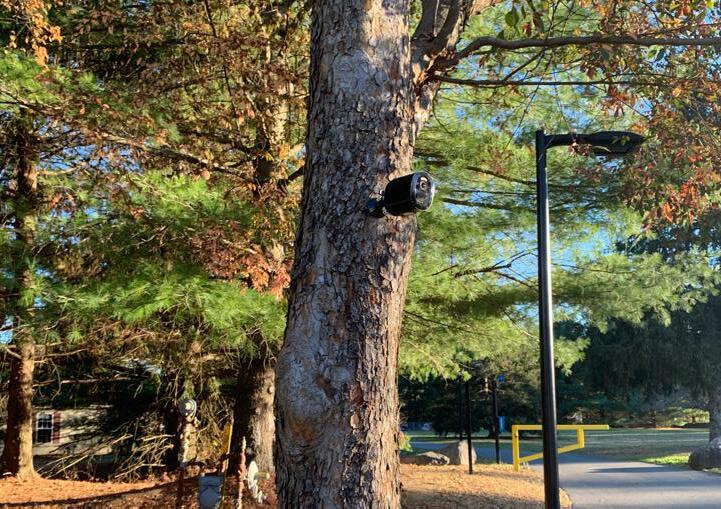
some of the tensions between students and the administration right now—putting up a bunch of cameras without telling anyone isn’t really a smooth way to do that.”
Currently, there are 304 cameras across Vassar’s 100 buildings and 1,000 acres of land. In comparison to peer institutions, Vassar has comparable or fewer cameras on campus, Alamo wrote. He added that the College added 19 cameras last summer and 21 in Summer 2023.
Over the Winter Break, the College installed eight cameras inside Gordon Commons, in response to the Oct. 5, 2024 vandalism that flooded the kitchen, bringing the total number of cameras in the dining hall to 23, according to a written correspondence with Director of Dining Services Chris Mongeon. The perpetrators stuffed the floor drains in the kitchen with trash bags, smashed the dishwasher and vandalized the break room, he explained, racking up tens of thousands of dollars in damage. Mongeon wrote: “After
See Cameras on page 3
Unearthing a campus tradition
It was three years ago, amid the suffocating humidity of late August, that I discovered my most prized Vassar treasure. I found myself near Millerton, New York, visiting a friend before fall classes began. A small town enveloped within endless stretches of farmland, Millerton’s sights and attractions primarily consist of a few cafes and a small movie theater—exhaustible in a short afternoon strolling through town. As my grand tour came to a close, the oppressive heat pushed my friend and me into the relief of an air-conditioned antique store. Makeshift aisles zigzagged amongst piles of discarded junk and forgotten family heirlooms. As I casually perused piles of old china and glass figurines, several useless knick knacks for my new dorm room made their way into my hands. Yet upon reaching the bins of vintage postcards, a familiar insignia caught my eye—the Vassar College crest, stamped in silver upon the cover of a thin, yellowing book. Vassar’s history has long been of interest to me; I often find myself obsessing over aged copies of The Miscellany News or scanning old Vassarions deep in the library basement. I pride myself on having a wide breadth of knowledge of even Vassar’s oldest traditions, hoping to gain some semblance of under-
5 ARTS
standing of those from whom I have inherited this campus. But I had never before seen a book like this. The cover was embossed in scrawling silver with the words Class Day Book directly under the school’s crest. The book was clearly quite old—several water stains blemished its cover, and the binding was a simple white string, yet it remained intact.
Opening the book revealed a date typed on the first page: June 7, 1898. A name written in loopy cursive sat in the upper right-hand corner, yet I could only make out a few letters: Grace M. G—. It took me some digging to find Grace in the yearbook; the Class of 1898 Vassarion is practically disintegrating, bits of paper flaking off the edges and pages falling out here and there. Yet there she was, a graduating senior and member of the College’s Marshall Club and the Contemporary literary society: Grace Mabel Garvin. Grasping in my hands the very Day Book she once held, feeling her handwritten signature beneath my fingers over a century later, I was overwhelmed.
The Class Day book is an old college tradition that has all but died out over the years. While the internet and Vassar’s Archives provide little to no information, it is not difficult to discern the book’s function. Also known as a Class History, the Day Book con-
See Senior on page 6
Vassar College’s student newspaper of record since 1866
BREAKING NEWS: Torrey Maldonado ’96 to give address at 161st Commencement
Allen Hale Editor-In-Chief
OnFeb. 19, 2025, The Miscellany News was informed by Vassar College that author, educator and alumnus Torrey Maldonado ’96 will address the Class of 2025 at the 161st Commencement ceremony. The event is currently scheduled to take place on May 25, 2025.
According to his personal website and X account, Maldonado has taught in the New
York City public schools system for nearly 30 years, drawing upon students’ experience and his own in his stories. Maldonado was born and raised in Brooklyn, growing up in the Red Hook housing projects.
Maldonado’s published works include “What Lane?” and “Tight.” The former earned citations by Oprah Daily and The New York Times as an essential book to discuss topics like racism and allyship with young readers. An interview with Maldonado and The Miscellany News is forthcoming.
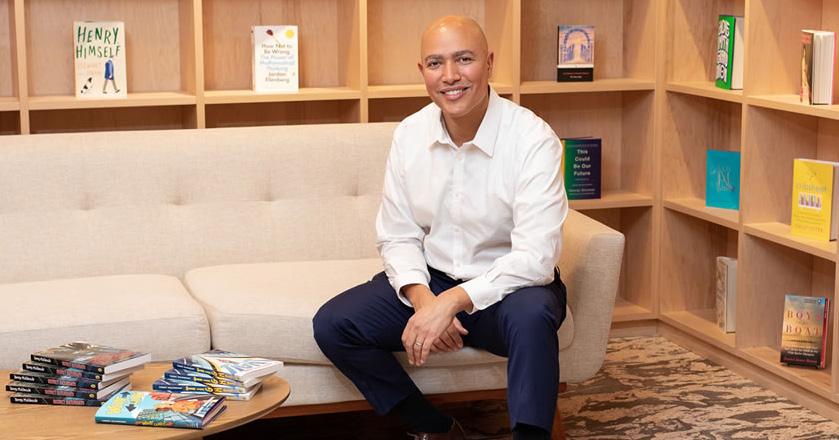
Vassar acquires Arlington land
VassarCollege owns 74 distinct parcels of land throughout Poughkeepsie, equal to roughly 932 acres. These plots include the main campus, the Preserve, athletic fields and many homes on the edges of campus. The College also owns several undeveloped plots that do not abut the campus.
Vice President for Finance and Administration Bryan Swarthout wrote via email to The Miscellany News: “The College has acquired a number of small parcels that are contiguous with each other.” However, multiple parcels owned by the College are not contiguous, such as 189 Manchester Rd., a roughly three-acre empty plot, and 147 Hoffman St, an undeveloped strip three miles from campus that runs next to the train tracks along the Hudson River.
Not all of Vassar’s real estate holdings, however, are under its own name. Since 1999, the College has maintained College Properties LLC, a for-profit company that owns a little over one acre of commercial property near campus. College Properties LLC’s main holding is the building 60 Raymond Ave, which extends from La Vickyna Latin Fusion to Savona’s Trattoria and Bar. The company also owns the empty lot to the right of Crafted Kup and two nearby proper-
Have you or a loved one been impacted by snow parking restrictions? You may be entitled to read Oliver Stewart’s article. 7 HUMOR Inside this
Student DJ duo Radical Transparency and Sam Goldstein discuss creative collaboration

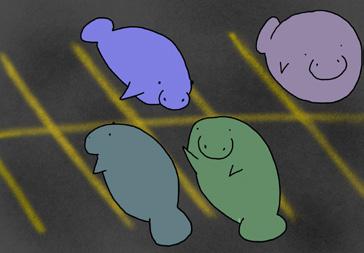
ties on Lagrange Avenue. When combined, College Properties’ holdings are a nearly contiguous acre of land in the heart of Arlington’s business district; the only building missing from College Properties’ possession is 50 Raymond Ave, between 60 Raymond and the empty lot, which houses New Nelly’s Restaurant, Twisted Soul and Gladmore Cleaners. Vassar’s 2023–2024 endowment report noted that the College had invested $3,886,702 in marketable real estate in 2024. Deputy to the President and Secretary of the Board of Trustees Wesley Dixon told The Miscellany News by email: “This practice is common for higher education institutions that have off campus real estate to make the purchases through an entity like this.” Swarthout noted, “We are now working with community members on and off campus to imagine what could be developed there that would benefit the community… Our goal is to enhance the existing area with a walkable, vibrant addition that mixes residences and retail, with a large amount of affordable housing.”
Because College Properties is a for-profit entity, the College has a seat on the board of the Arlington Business Improvement District (ABID), an organization that since 2001 has worked to revitalize the Arlington area. Swarthout has served as the ABID Treasurer
See Properties on page 3
Paige Hahn examines the impact of BookTok trends on literature and publishing.
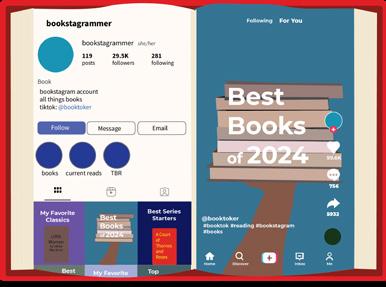
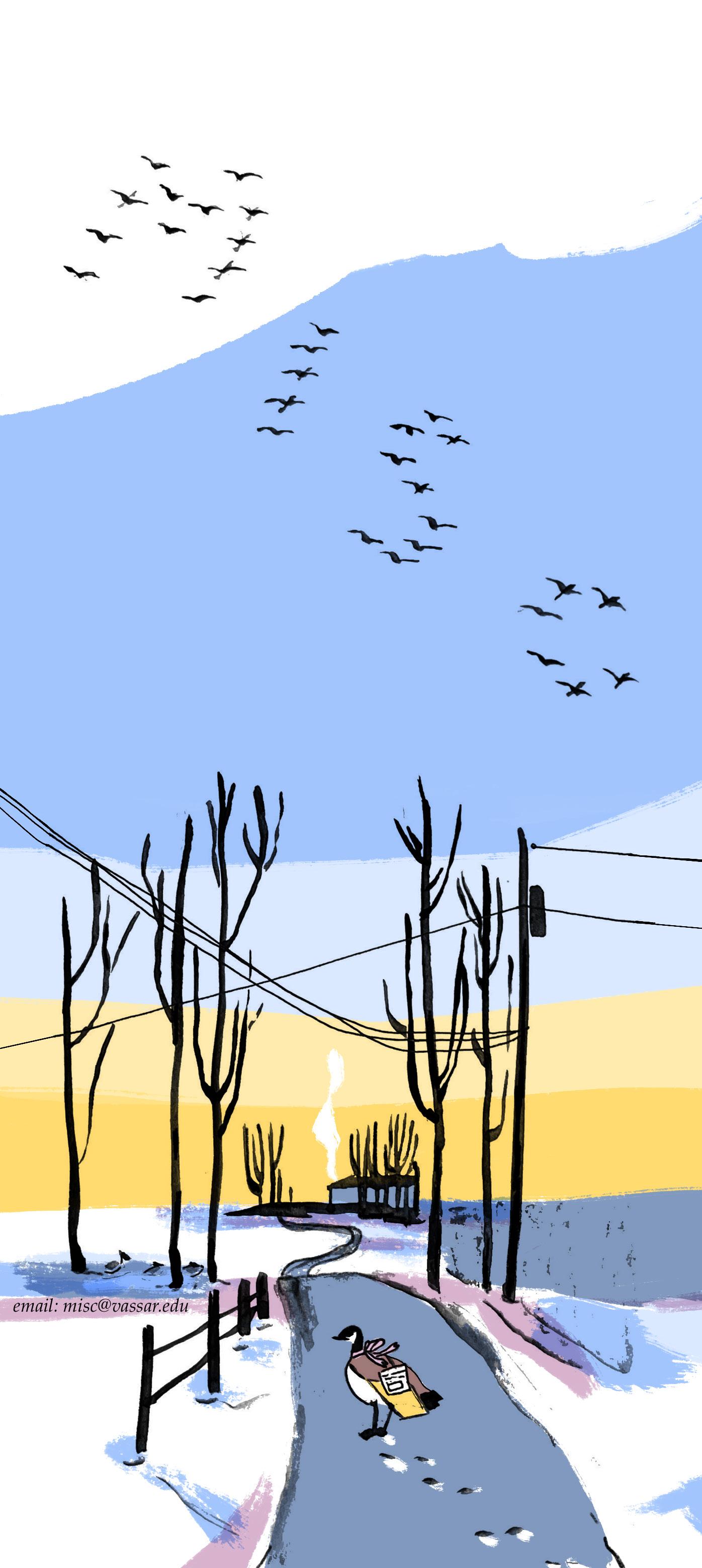
THE MISCELLANY NEWS
EDITOR-IN-CHIEF
MANAGING EDITOR
SENIOR EDITORS
CONTRIBUTING EDITORS
NEWS EDITORS
ASSISTANT NEWS EDITOR ARTS EDITOR
ASSISTANT ARTS EDITORS
FEATURES EDITORS
OPINIONS EDITOR HUMOR EDITORS
ASSISTANT HUMOR EDITORS
SPORTS EDITOR
ASSISTANT SPORTS EDITOR DESIGN EDITORS
ASSISTANT DESIGN EDITORS
COPY EDITOR
ASSISTANT COPY EDITORS
GRAPHICS EDITOR
ASSISTANT GRAPHICS EDITORS
GAMES EDITORS
SOCIAL MEDIA MANAGERS
LIVE EVENTS CHAIR WEBMASTER REPORTERS/COLUMNISTS
CARTOONIST COPY STAFF
Allen
Maryam Bacchus
Carina Cole
Lev Winickoff
Jacques Abou-Rizk
Jesse Koblin
Charlotte Robertson
Nicolas Villamil
Emma Brown
Sarah McNeil
Julian Balsley
Emma Adams
Madeleine Nicks
Benjamin Kaplan
Yaksha Gummadapu
Luke Jenkins
Soren Fischer
Oliver Stewart
Nicholas Tillinghast
Emma daRosa
Josie Wenner
Henry France
Casey McMenamin
Ellie Kogan
Lucas Seguinot
Amelia Gracie
Holland Kaplan
Darja Coutts
Kathryn Carvel
Grace Finke
Tori Kim
Annie McShane
Berk Meral
Natalie Sang
Sadie Keesbury
Felix Mundy-Mancino
Miranda Liu
Zoey Ojalvo
Fallon Dern
Kai Chang
Jordan Alch
Wren Buehler
Eduardo Culmer
Sydney Jones
Anna Kozloski
Ben Vinson
Ian Watanabe
Andrew Chu
Nikola Parker Cooperman
Sadie
Baken-Durchslag
Paige Hahn
Quinn Kou
Gabrielle Lyman
Ren Nicolau
Tess Novack
CORRECTION POLICY
Vassar community questions usage of security cameras
that incident, nearly a dozen employees said they felt unsafe and thought we should get more cameras.”
Mongeon added that, following Winter Break, three Gordon Commons employees expressed satisfaction with the camera installation. He also wrote: “One dining employee, who does not work in Gordon Commons, felt that cameras in Gordon were unwarranted.”
Vassar’s “Campus Safety Video Camera Policy,” published in the College’s online library, provides an outline of surveillance privacy, placement and limitations for use, listing loading docks, storage rooms, residence house doors and the Thompson Memorial Library, among others, as camera locations. Signage is permitted but not required. Only authorized personnel can access security footage, though footage may be given to local law enforcement agencies to support investigations if the College requests an external investigation. Security footage may not be used to enforce minor violations of the student code, like carrying an open bottle of alcohol.
In the past, footage has been used to identify unknown individuals harassing Vassar community members—such as entering student housing uninvited or looking in student housing windows, Alamo wrote. Mongeon added that by using camera footage from Gordon Commons, “Campus Safety was able to prove an inappropriate encounter between two individuals following an initial complaint.”
Recently, footage has been used in an ongoing investigation of the vandalism incident on Dec. 13, when buildings around Vassar, including Gordon Commons, the Thompson Memorial Library, Rockefeller Hall and New England, were spray-painted with the phrases “free Palestine,” “blood on your hands,”
“land back now” and “Intifada.”
On Sunday, Feb. 2, Vassar Students for Justice in Palestine (VSJP) and Vassar Popular University (VPU) published a joint press release on their respective Instagrams that claimed that Vassar’s investigation into last December’s graffiti included repressive and intimidating tactics. The post read: “This week, officers from Vassar’s Campus Safety appeared unannounced at two students’ dorms and demanded to escort them to a meeting with the campus investigator and former detective with the Poughkeepsie police, Joseph Chorba.” It added that the students were not granted a chosen support person nor given prior notice. By the Students Bill of Rights, students are entitled to adequate notice and to be accompanied by an advisor of choice.
In an email to The Miscellany News, Alamo wrote: “The SJP posts contain several factual inaccuracies, including a failure to properly distinguish an investigation from the Community Expectations process. Specifically, in an investigation, there is no requirement for advance notice or requirement that there be a support person.” He added: “Nevertheless, in this case, when students have asked for a support person, we have worked with the student to offer that.”
Under the condition of anonymity, a member of VPU told The Miscellany News that the number of students approached by the administration regarding December’s vandalism has since increased to four.
Vassar Student Association (VSA) President Emily Doucet met with Alamo and President Elizabeth Bradley after the posts were published to communicate constituent concerns about the policy. She said students should be given ample notice before being approached by administrators: “We want
to have it be mandated that in any circumstance, if [the administration] is going to be seeing an audience, let’s say with a student, you’re going to tell them at least 24 hours ahead of the time you’re going to be trying to do that.”
Doucet respected that the College did not involve law enforcement in the investigation against students but acknowledged the difficulties of an internal investigation. “That’s a good decision to make, but I also feel like they need to continue with that follow through of having a better enumerated process in how to handle these internal investigations if you’re not going to bring in the authorities, which they shouldn’t be doing,” she said.
The College should release a list of the locations that have security cameras in them, Doucet said: “Just so people are aware that, like, ‘Hey, when you’re walking into the Deece [Gordon Commons] right there, there’s a security camera, just so you know,’ and kind of have that information.”
Doucet could not recall a time when the VSA aided the College with security camera policy or placement in the past few years.
While visiting the Campus Response Center desk in Main Building, which houses the closed-circuit television monitors connected to cameras around campus, Lewis realized there were cameras pointed at some common spaces in academic buildings. “I had no idea there were cameras there,” he said. “The fact that there’s no open conversation about that makes me trust the administration less.”
In response to student concerns about camera usage, Alamo, the VSA, the Office of Restorative Practices and Campus Activities hosted two “Listening Sessions on Camera Usage and Student Privacy” on Monday, Feb. 17 and Thursday, Feb. 20. The invite was sent to all student org presidents and treasurers
with an invitation to share with anyone who might be interested in attending.
Director of Student Activities Will Rush wrote in an email to The Miscellany News, “The sessions were designed based on feedback from student organization leaders who have shared concerns with the VSA about various topics in their roles as leaders on campus. The goal was to keep sessions to a manageable and conversational size.”
Rush added that he hopes to work with the VSA and College on putting together a fact sheet for the greater student body on common questions following the second session.
The role of security footage on a campus such as Vassar’s is complicated, Doucet said. “On the one hand, we do have a very open campus,” she explained. “But I’m also not too keen on using that resource [cameras] on members that are within the Vassar community.”
Lewis mentioned he is interested in learning more about what other kinds of surveillance methods Vassar uses. “The fact that we all use Vassar emails, we all use Vassar WiFi… it’s unclear to me what kind of surveillance can happen through that,” he said. In a follow-up email, he wrote: “If Admin will not give straight answers about cameras—which they have put up in the open on sunny Friday afternoons—I wonder what other kind of surveillance is quietly happening.”
As for alternate responses to the December vandalism, the anonymous VPU student suggested the College pay attention to the message the student vandalizers sought to send. “We should have a culture of mutual respect and trust,” they said. “It would be nice if [the administration] would be like, ‘Oh, there’s students vandalizing property. Maybe we should give the land back. Maybe we should divest.’ That’s an ideal.”
College amasses Arlington properties through third parties
since 2014.
ABID emerged from the Arlington Revitalization Steering Committee, a group of College administrators, property owners and residents who began meeting as a private group in 1998 to counter economic decline in Arlington. Throughout the second half of the 20th century, suburbanization had slowly eaten away at the Arlington business district, causing decreasing reinvestment and business activity, deteriorating public infrastructure and rising retail space vacancy rates. ABID, a public entity, replaced the Steering Committee in 2001 and began levying taxes in 2003; for over two decades, the College has had at least a partial hand in tax collection on Arlington business owners. In an email to The Miscellany News, ABID President Ross Hardisty wrote, “Taxes are a decision made by the Town Board.” College Properties is not the only private real estate company in Arlington that Vassar has a stake in. Through College Properties, Vassar is invested in Arlington Capital Investors LLC (ACI), another company that owns Arlington properties. While the College is not directly affiliated with ACI, College Properties is a partial equity investor with a 50 percent investment in the company. According to New York State’s Department of State, Division of Corporations, ACI is owned by Teahan & Constantino LLP, a Dutchess County-based law firm that specializes in tax, business and estate planning and administration law, in addition to real estate transactions. However, ACI’s real estate acquisitions are managed by TCD Management Corporation, a real estate prop-
erty management company. In 2023, TCD worked with Vassar directly to manage the construction of additional faculty housing.
David Kaminski, who owns TCD with his wife, Jennifer Berlind, told The Miscellany News by email, “TCD is under contract with Arlington Capital Investors LLC (ACI) to provide the property management services for the properties owned by ACI.”
Swarthout also noted: “Vassar has partial ownership of Arlington Capital, which is a partnership with local business owners in acquiring and considering development in Arlington. It is a shared decision making process that includes engagement with the community.”
ACI owns nine parcels of land in Arlington totaling just under 1.5 acres, all of which are in close proximity to the Vassar campus, including both commercial and residential real estate. ACI’s first five purchases, from July 2021 to December 2022, are spread throughout three blocks on Collegeview Avenue, Lagrange Avenue and Fairmont Street. But on Oct. 31, 2023, ACI purchased three properties on the same day abutting College Properties’ holdings—the building occupied by Pizzeria Bacio and House of Nutrition, the Barber Haus and the residential 18 Lagrange Ave.
On Jan. 1, 2024, ACI purchased 16 Lagrange Ave., a house often leased to Vassar students, colloquially known as “Blue House.” ACI left Blue House as student housing and none of its residents were asked to leave, but its neighbor at 18 Lagrange was not so lucky. Karun Krishnamurthy ’24 wrote an article in The Miscellany News about the experience last March. A Blue House resident from
Summer 2023 to Spring 2024, Krishnamurthy told The Miscellany News, “Basically what ACI did was evicted all the tenants in [18 Lagrange Ave], which really sucked… They gave them, like, three months notice, but it still sucked.” Krishnamurthy recalled that one resident had been living in the house for 10 years; another returned from visiting family in another country to find they no longer had a place to live.
Krishnamurthy worried that because ACI’s recent acquisitions border one another, the company has established a large plot of land fully under their control. Krishnamurthy noted, “They have basically that parking lot, the Barber Haus, Blue House and [18 Lagrange Ave], which is essentially a pretty big surface area, so they could build something pretty big if they wanted to, and evict all the people.” Carmen Skinder ’26 expressed a similar worry: “The College is really interested in expansion to keep the place open, I guess, and make more money, but they’re also reaching the limits of the current Vassar-owned properties in their name.” She added, “Which raises the question of, ‘What do they plan to do with these properties that they’re purchasing in quick succession that are all next to each other?’”
Furthermore, ACI’s block of property borders College Properties’ acre of nearly-contiguous property. When combined, Vassar has at least partial control over almost all of the nearly two acres of property from Crafted Kup to the Barber Haus, save for two buildings.
Combining the holdings of Vassar College, College Properties and Arlington Capital, the College has full or partial ownership of near-
ly 90 properties in Arlington and Poughkeepsie. Swarthout explained: “We also hope the development in Arlington will provide new revenue that could support Vassar’s educational mission.” According to Vassar’s income tax forms, the College made a total of $1,694,122 through rental income in 2022. Some students have expressed concern about the impact of Vassar’s investments on the surrounding community. “Through all of this real estate purchasing, there’s this merging of public and private interests, in which the College, all of a sudden, has a lot more say in the governance of Arlington,” said Skinder. “Their idea of a better Arlington is more about business improvement and gentrification, rather than the people who’ve been living here for 20 years.”
Vassar’s real estate purchases do not seem to be over. In a Feb. 17 email to the student body recapping the BoT’s most recent meeting, Chair of the Board of Trustees Sharon Davidson Chang ’84 P’19 and Dixon wrote: “The Board heard a presentation from Vice President of Finance and Administration Bryan Swarthout and Deputy to the President Wesley Dixon about future development plans in Arlington.”
Dixon wrote, “Our goals are to create more housing density in Arlington (including workforce housing), create commercial opportunities that align with the Town of Poughkeepsie’s goal to strengthen Arlington as a hub in the Town of Poughkeepsie, and to create an environment that includes dining, entertainment, shopping, affordable housing and community connections options for the broader Vassar and Hudson Valley communities.”
Audra’s Turn: Celebrating the epic ‘Gypsy’ revival
Madeleine Nicks Assistant Arts Editor
[SPOILERS AHEAD]
It is no small task to stage a revival at a time on Broadway when revivals are the name of the game. It is an even bigger task to revive one of the most beloved and significant golden age musicals: “Gypsy.” The book was written by Arthur Laurents, the score by Jule Styne and the lyrics by none other than Stephen Sondheim. This powerhouse trio meant that “Gypsy,” which originally debuted in 1959, became an instant hit and remains one of the most canonically important musicals ever to grace a Broadway stage. That is also why it is one of the most regularly revived shows over the past 66 years.
So then the question must be asked, why revive it now, in 2025? The answer is, undoubtedly, Audra McDonald, who plays Rose, the show’s protagonist. For those unfamiliar with McDonald, she is one of the reigning queens of the musical theater world, with six Tonys to her name and an impressive career that spans decades and mediums. There is no shortage of powerhouse theatrical performers, namely Ethel Merman, Bernadette Peters and Patti LuPone, who have put their spin on Rose, a desperately ambitious stage mother, but McDonald’s portrayal is nothing short of perfect.
Rose is certainly a difficult character to build a show around. She is demanding, distractible and cold-hearted. It is her sheer force of will that moves the story forward while simultaneously making it spiral downward. And yet, McDonald makes her
incredibly easy to root for. You want to hate her, the show is asking you to hate her, but when she eases seamlessly into her operatic, rich voice and natural comedic timing, you cannot help but hope and dream right alongside her. She moves away from the unhinged lunacy that some actresses have chosen to capture and decides to highlight Rose’s unwavering hustle and complex, deep-rooted fear of intimacy, commitment and failure.
It has to be noted, of course, that McDonald is a Black woman and is the first person of color to ever take on this massive role.
The show is directed by George C. Wolfe, who has spent his own career championing shows centered around the African-American experience and perspective. “Gypsy” is based on the memoirs of striptease performer Gypsy Rose Lee and her family, who were notably white. The source material undoubtedly set the tone for the musical to be cornered into a primarily white cast. With Wolfe as director and McDonald as the star, “Gypsy” has evolved into a piece filled with subtle but powerful racial commentary. Wolfe is, in many ways, collapsing the timeline and boundaries between the audience and the musical itself, as McDonald’s opportunity to play the role is the answer to Rose’s dreams. The surrealist yet pared-down sets and lighting aid in this idea that Wolfe is experimenting and is not afraid to go against the grain of the original staging. The purpose of reviving a musical is to do something different and interesting, and by abandoning expectations for the show’s cast and allowing the plot to be influenced by those choices, Wolfe gives “Gypsy” a fresh streak of authenticity. While Rose is the center of “Gypsy,”
the show revolves around her two daughters, June (Jordan Tyson) and Louise (Joy Woods), and the former’s unwavering desire to establish them as stars of the vaudeville circuit. The family travels around in a chaotic caravan, performing the same shrill number at each stop, as Rose tries to catapult June to fame. The story begins with the two daughters played by child actresses, both of whom give impressively confident and dazzling performances. The plot jumps in time, with their adult counterparts taking over the roles, though their vaudeville routine stays infantile and overdone. Along the way, Rose meets a man named Herbie and convinces him to join them on their journey. Herbie, played by Danny Burstein, falls quickly in love with Rose and spends the entire musical trying, without success, to marry her. Burstein makes the most out of this small and one-noted romantic interest. His chemistry with McDonald is effortless and earnest, and his calm and hopeful demeanor often feels like the anchor keeping the entire musical believable and afloat. Eventually, when June abandons the act and breaks free from the shackles of her mother’s demands, the focus turns to Louise. What ensues is a seemingly hopeless struggle to keep performing as vaudeville becomes an increasingly dying art. Rose begins to run out of ideas, and Louise struggles to support an entire show on her reserved and self-conscious shoulders.
The second act soon finds the family taking a job as the “clean” act at a burlesque house. Louise meets and befriends three of the striptease performers, who show her the ways of their profession and how to get along in their world with your sense of
humor intact. When the house falls into some hard times, Rose sees the opportunity to make Louise the star, even at the expense of her modesty. Horrified that Rose has abandoned her beliefs, Herbie leaves her. Without someone to regulate Rose, and with Louise reveling in her taste of stardom, the show quickly concludes with Louise’s speedy rise to become a world-famous striptease performer, adopting the stage name Gypsy Rose Lee. The modest sets suddenly transform into the glamorous, immersive world of striptease, complemented by expressive choreography and intricate costumes. Woods gives an expert performance as she sheds her sheepish, awkward exterior and allows a glamorous and harsh diva to emerge during her final number. She has finally captured the attention from the world that she had been so desperately craving from her mother and makes sure to rejoice in that fact.
Rose does not evolve in the way that Louise does. She does not enjoy the success she had fought so hard for her daughters to have. She is left alone, disgusted at the way in which her own decisions have ruined her from the inside out. Her final song, “Rose’s Turn,” arguably the most famous number in the musical, finds McDonald alone on stage, sobbing and belting out the anger and selfishness she had been containing up until that point. She takes her time with the song and lets her technique shine, with a boundless range of emotion. McDonald delivers a performance only she could, bringing the audience to their feet, equally enraptured and horrified. With a sharp vulnerability and all-consuming grief, it is not Rose who gets the final word, but McDonald.
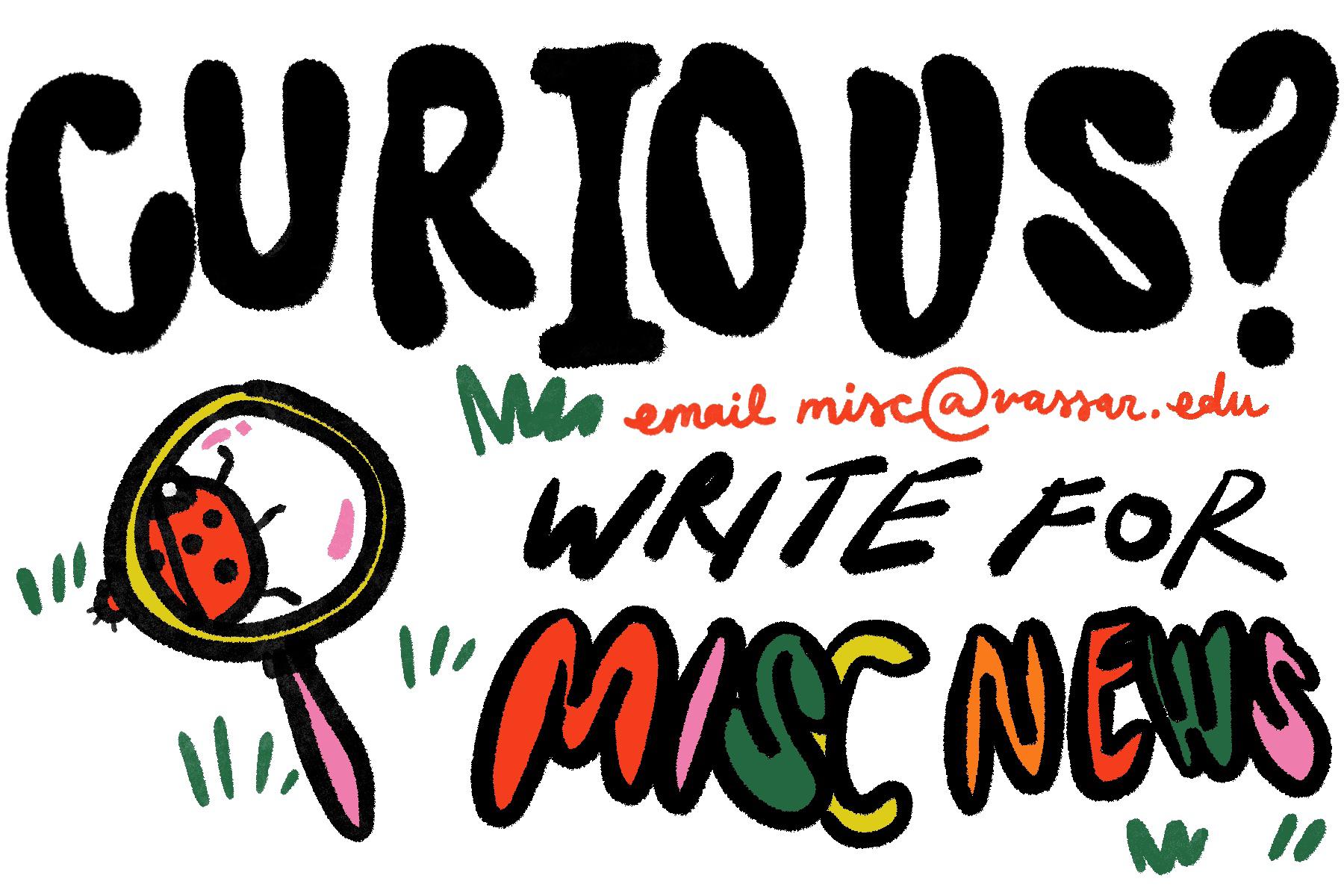
Spotlighting Radical Transparency
For Sebastian DiPirro ’25 and Augie Tarver ’25, who make up the electronic duo Radical Transparency, music was not always their dream. In fact, neither of them enjoyed playing instruments for years. Though he began the drums in middle school, Tarver hated them until he joined a band at the end of high school. DiPirro, who was made to play the piano as a kid, felt similarly and did not start making music of his own until this year. Their collaboration began only a few months ago after they realized they were both fans of house music. However, like their first experiences playing instruments, their partnership began inauspiciously. In their first session in the production studio together, the pair ended up troubleshooting issues with an analog synth for three hours. Undeterred, they soon developed a sense of partnership and a creative process, in which DiPirro brings ideas for Tarver to refine. Having played in bands for years now, this experience has been freeing for Tarver, who can now contribute more directly to making music. In the past he described feeling “confined to just drums, which are admittedly the least important when you’re actually writing a song,” and he has enjoyed the creative freedom of making music without physical instruments. They are both nonchalant California boys, too relaxed for this East Coast liberal arts college. DiPirro, raised as a surfer, is somehow the more nebbish of the two, if the word can even apply. Tarver’s favorite word seems to be “later,” his all-purpose conversational finale, whether you are going to the dining hall, to bed or leaving for a month-long break. I will admit that the two of them are
my close friends—one of them my housemate and the other among the first people I met at this school—and I cannot be unbiased about them as people. Many times now DiPirro has told me that I have to include the quote “I had a dream about a big blue tsunami” as a pull quote in the article. In our interview, Tarver sat back, listening more than he talked, though when he did, his words were concise, slow and articulate. DiPirro, on the other hand, spoke quickly, leaning forward, barely able to contain his excitement about music. He told me once that he barely said anything at all until third grade, and to this day he comes across as if he is making up for lost time.
Now, emboldened by releasing music together and performing at student parties, they wonder about the future and how ambitious they should be. Music is fun for them, and working together even more so. They told me that, in the studio, they really just want to impress one another, a collaborator whose taste they respect. DiPirro described their first time working together to me: “I was so happy that somebody else was interested in this because I feel like I’m always dragging people around. And I was like, wait, he’s really into this too.”
Yet, dance music is inherently made for others. As DiPirro later put it, “The reason I love DJing is that I love dancing, and dancing is social.” At one point in our interview, the two wondered aloud whether they should send their next project to a label, as if this was a question occurring to them for the first time.
Their first EP as a duo, released this past Friday and titled “supplements,” is in many ways the product of their musical influences, with half of the songs featuring hooky vocal
loops, while others are arranged more sparsely. Nevertheless, the project feels cohesive, punchy, melodic and full of energy. While their live shows often incorporate humor, such as an AI-generated voice praising themselves for their work, the EP is serious and relatively unironic. However, DiPirro admitted that it is hard to describe electronic music, as “The whole point is to get people to dance, but not to talk necessarily.”
Though DiPirro told me that while he got into DJing because he loved to dance, standing behind the board makes him and Tarver the only people at a party who cannot fully do so. Still, it seems to be enjoyable enough for
the pair, who have now done two shows at the Arlington restaurant Meyer’s Old Dutch and several on-campus parties. As Tarver described these shows, the first for which they have been paid, “I’m just so happy to be there. The idea of someone paying me to make music is like the greatest joy possible.” I winced after asking whether they wanted to continue working on music together post-graduation, knowing that plans after May feel unrealistic. Yet I was taken aback by their immediate affirmation. Without a doubt in his voice, DiPirro replied, “That’s not a stressful question. Undoubtedly, yeah. I don’t know anyone else.”

Addison Rae executes the world’s best rebrand
In March 2021, TikTok superstar Addison Rae released her debut single “Obsessed,” a haphazard attempt to enter the music scene by building off her 88.4 million followers. Immediately, the general public was not a fan: “It’s really, really bad,” stated critics upon release.
The early 2020s Rae was an internet sensation, characterized as bubbly, stereotypically feminine and a feature member of the ridiculous Hype House—a content creation house that offered an excuse for teens to party all day. Rae was clearly inexperienced and unpolished. At one point, she made fans step aside when they asked for a picture so she could film a dancing TikTok instead. Later, on top of other mindless comments and weird behaviors, like using a sheet of glass instead of wearing a face mask during the COVID-19 pandemic, she approached Donald Trump at a UFC fight to introduce herself, igniting internet backlash as she had made past claims of being a supporter of BLM and social justice movements. Rae was quickly falling out of public popularity and desperately needed a rebrand to attain the social status and likeability she once possessed.
In comes “Addison 2.0,” Rae’s new persona, first photographed by the paparazzi wearing a sweater displaying SOPHIE, the wildly influential and experimental hyperpop producer. Up until this point, Rae was secretly planting signs of her soon-to-come rebrand; she had greater goals in mind than being a mere TikTok star. She knew creating music was the answer, but her lackluster performance thus far was not going to cut it.
In January 2022, snippets of Rae’s unreleased music went viral online, garnering a surprisingly positive reaction, particularly with the song “I Got It Bad.” Another leaked track, titled “Nothing On (But The Radio),” was originally an unreleased piece by Lady Gaga. Consequently, Rae quickly gained a cult following with the queer, pop culture-obsessed side of the internet, who were intrigued by her newfound quirkiness. After seeing this successful audience reaction, Rae gained the courage and confidence to finally release more music after a two-year hiatus. On Aug. 14, 2023, she announced her debut EP, “AR,” made up of unreleased songs that were intended for a “lost album.” Rae revealed “[she] wanted this EP to be the end note to the past few years, and a stepping stone forward in [her] career.” “AR” was released a few days later on Aug. 18, consisting of four tracks and a feature from alternative hyperpop superstar Charli xcx. Audience reactions were strong, with Billboard calling it a work that, “engross[es] the listener with fresh melodies and bursts of personality, showcasing the 22-year-old as a quick study within this brand of pop.”
It became clear Rae had the potential to be a “main pop girl,” but up until this point, she only showed a glimpse of her full capabilities. After a quick but successful feature on Charli xcx’s “Von dutch a.g. cook remix”—in which Rae can be heard literally screaming at full blast—she undoubtedly began to paint herself as a serious figure in the pop world. In June 2024, she started teasing her anticipated debut with Columbia Records, “Diet Pepsi,” which was originally entitled “Backseat,” until Charli xcx asked, “Why isn’t the song called ‘Diet Pepsi?’” After its release, the
song was immediately a hit, as fans were satisfied with her shift from mediocre lyrics over boring, bubblegum pop to a more mature, alternative sound. The song is strikingly seductive, conceptually mind-boggling with its addictive chorus and has a resonating hint of Lana Del Rey-ism with its simmering synths and sexy bass. “Diet Pepsi” ranked high on multiple Best Songs of 2024 lists and was trending across the internet. After reaching number 54 on the Billboard Hot 100 and delivering an incredible music video, Rae was finally considered a serious artist in the industry.
Rae released two more singles, “Aquamarine” and the recent “High Fashion,” both intended to be on her debut album alongside “Diet Pepsi.” “Aquamarine” is elegant, elusive and unnatural due to its nostalgic sound, intertwined with similar clean synth production and mystical lyricism discussing self-discovery and transformation. In the music video, which is easily one of the best I have seen in years, Rae glides within alluring choreography that you immediately become enchanted and trapped within her glittery, supernatural world. To drive this message home, she faithfully smokes two cigarettes at once, all while lustfully staring into the camera.
A remix collaboration with experimental producer Arca, comically titled “Arcamarine,” is fun and hard-hitting—a shift from Arca’s usual electronic, dark sound. On “High Fashion,” released Valentine’s Day 2025, Rae skillfully maneuvers with ease, reinventing her camp sound by presenting loud synths and rough percussion. In the teaser for the song, the word “DRUGS” flashes in hot pink, foreshadowing the music
video, where Rae ironically plays with white powder. All three songs released by “Addison 2.0” have been incredible, both aesthetically and sonically. Anticipation for her debut album is at an all-time high, and its release is luckily imminent.
But what makes Rae so alluring? For starters, she takes a different approach to stardom, focusing more on her aesthetic and effervescence as opposed to trying for a viral moment, a clear contrast from her past self. Rae displays a carefree attitude while showcasing authenticity at the same time. Instead of desperately attempting to chase trends, she pursues a creative vision, in part with help from her choreographer and creative director Lexee Smith, who many credit for Rae’s rebrand. Opposed to diluting the sounds of her influences, Rae creates something fresh. Her vision is successfully strong and clear, displayed both within her music videos and her social media presence. And by associating herself with figures like Charli xcx, she has gained the attention to attract a diverse audience, including queer voices. She is quirky, bold, and uses her art to showcase her unapologetic self: Addison Rae loves herself, and she wants us to love her too.
Rae is only just getting started in the music world, and I have never been more excited to witness her growth. Her debut album is expected to drop sometime in 2025 and is rumored to have nine songs showcasing her immersive and diverse style. Rae is keeping unique methodology alive and creating her own version of the pop star: someone who is not afraid to exhibit their mystifying and dramatic self.
“You’re obsessed with me,” she stated in her 2021 debut single, and at last we are.
Senior discovers antique Class Day Book
tains a narrative account of the graduating classes’ notable experiences from freshman to senior year, complete with inside jokes and jaunty class songs. Though I failed to find any notable information on this tradition, I did stumble upon a Vassar Class of 1916 Day Book available on eBay for a whopping $14. Given that I only paid $7, I considered my antique store find a win.
The Class of 1898’s description of freshman year begins with a poem:
“‘The time has come,’ the Walrus said ‘To talk of many things— Of shoes—and ships—and sealing wax— Of cabbages—and kings— And why the sea is boiling hot— And whether pigs have wings.’”
The editors suggest that perhaps the Walrus was preparing a class history because they, too, hope “to talk of many things” throughout their book. While I have not a clue what this poem means, nor whether it has any significance to the class, it sets an effective tone for the rest of the book. Above all, the Day Book appears to be a celebration of one’s time at Vassar, detailing the many traditions passed down from students past, the close relationships forged between each class year, and, of course, several more silly songs and poems.
Though students of today might presume their college experience to be quite different from that of the Class of 1898, aspects of the Vassar experience appear to transcend time. At the beginning of the Sophomore Year section, the editors write: “What bliss it was to be able to share in the wholesale experience embracing outside the chapel door; to relate
your summer experience to a roommate of your own selection and not one thrown in as it were with the room.” It appears even the earliest Vassar students endured the horrors of random roommate selection!
Sophomore year, too, brought the annual tree ceremony for the Class of 1898, much as it exists at Vassar today. For this occasion, ’98 sang this song:
“We came as animals two by two, The elephant and the kangaroo, Then rally round our maple, our maple, Of all trees she is the queen.
We hope she will live forever, forever, With her branches always green.”
Though I cannot recall singing a song that sounded like this at my own sophomore tree ceremony two years ago, there exists an eerie and fantastic resemblance between our time at Vassar and that of a hundred years ago.
In a similar ubiquitous fashion, the Class of 1898 and I appear to share many of the same sentiments upon entering senior spring at Vassar. We must now grapple with the fact that, very soon, we “shall say good bye to the busiest, happiest, dearest four years of our lives. So we won’t say it now. We’ll think only of the glorious future that we mean to make the best of, and pretend for one more day that those college days are not yet over.”
However Grace’s Day Book made it to that antique store in Millerton, I am grateful it has ended up in my hands. As an approaching Vassar graduate, I find myself in deep reflection on my college experience after investing myself in the Class of 1898. Like them, the Vassar I am leaving behind feels radically different from the Vassar I stepped
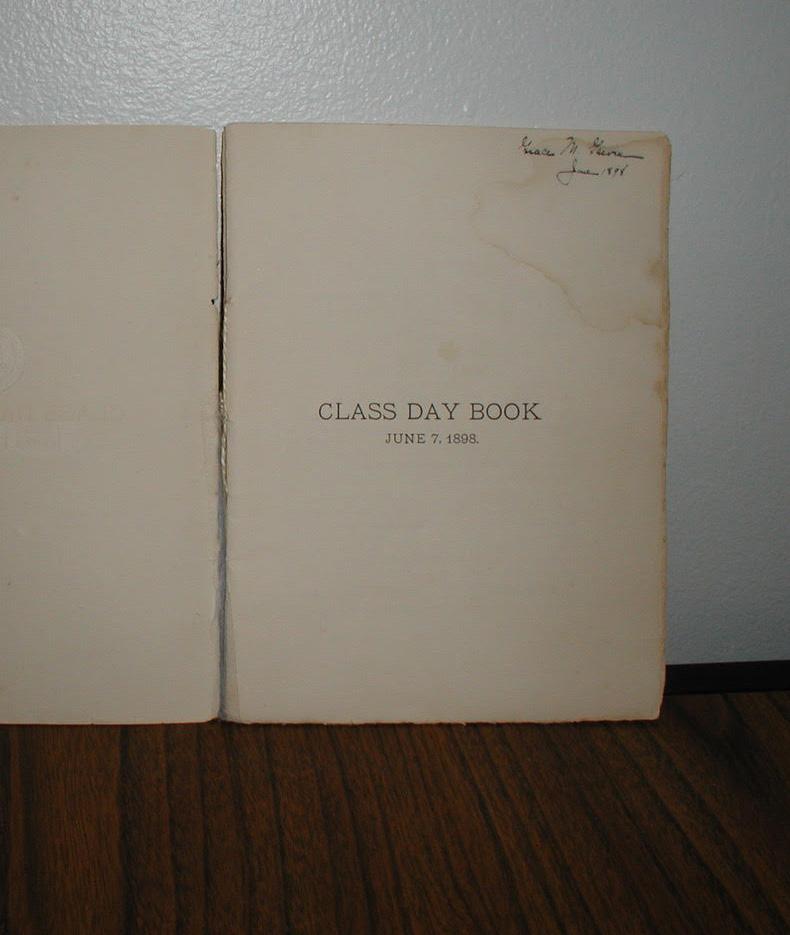
into nearly four years ago. Yet over time, it can seem like nothing here ever really changes. The time we inhabit this campus is so brief, yet the mark each of us has is indelible. As I prepare to enter the next phase of
my life, I hope to take with me some wisdom from a class that came long before me. To end with the yearbook quote of a young and wise Grace Garvin: “Be bold, be bold, and everywhere be bold.”

BREAKING NEWS
From the desk of Oliver Stewart, Humor Editor
Dean of Student Growth and Engagement trampled to death by 60-foot student
My weekends are being plagued by ‘snow events’
Winter is my least favorite season and it should be yours too. There is nothing redeeming about the months of December, January and February. They are filled with pain, agony and chapped lips. This winter has been especially brutal on campus. It seems as if every Saturday, I am awoken by another email notification from Dean of Snow, Dean Jaeger indicating a “Snow Event.” What soft, lovely phrasing for such a horrible thing! “Event” connotes a celebration of sorts, perhaps even a party or soiree. Instead, a non-flavored slurpee of slush falls violently from the sky as I am forced to cancel all my plans and stay inside, crying myself to sleep. What plans, you may ask? Contrary to popular belief, I actually take part in Pough-
keepsie’s raging nightlife. Weekends are my primary time to get wasted and party-hop from TH to TH (the key is to spend no more than seven minutes at each house before loudly exclaiming to your friends “THIS IS DROSS!” and making a dramatic exit). But these snow storms have been killing my street cred. It is impossible to “boogie down” when you are being bombarded by hailstones. It is rather difficult to masterfully execute the electric slide when you are sliding all over the place on slippery ice. Just last week, I witnessed a rather unfortunate event. My dear friend and housemate Nathan Shih ’25, who is known throughout the land as the life of the party, was attempting to demonstrate a killer maneuver he had recently accomplished in his favorite video game, “League of Legends,” which I am told is only played by the coolest of people. As he stomped on the ground to
emphasize the power of his move, he inadvertently stepped on a giant frozen puddle and fell a whopping 20 feet through it into the Earth. The party was cut short as we had to quickly assemble a rescue team and send one of our mutual friends down the hole with a rope to bring Nathan back up. On the bright side, I am being told that a Malayalam director is adapting this story into a feature film. But even worse than the Snow Event causing the catastrophic accident of my dear friend and housemate is the impact that it’s had on my car. I’m very fortunate to have a car on campus and it’s made my life tremendously easier. However, each Snow Event comes with special parking restrictions. As a Town House resident, every time it snows, I have to move my car to the Prentiss Field parking lot, which is an exhausting two minutes away from my regular parking spot. And it’s not
like Prentiss Field is magically exempt from snow storms. IT SNOWS THERE, TOO! Sometimes, even more than it does in the TH circle, which I can’t even comprehend. Once the Snow Event is over, I also have to move my car back to the TH circle. Do you know how much gas I’ve wasted on moving my stupid car back and forth between the same two spots? I’ve driven my car between that stretch of road and two speed bumps more than I’ve driven it anywhere else in Poughkeepsie all semester. Nobody should be putting so much time and effort into a 2012 Volvo.
The next time you eagerly await Groundhog Day praying for six more weeks of winter, please think of us who are less fortunate. Or at the very least, think of poor Dean Jaeger, whose hands must be cramping from having to write and send out the same exact email every week.
New events to have parking restrictions for
Oliver Stewart Gobbler’s Knob Resident
At exactly 9 o’clock on Sunday morning, students received a Vassar Alert via email, text and carrier pigeon, alerting them that Snow Event parking restrictions had been lifted, and that they were thereby free to resume parking as usual. With little to no snow expected in Poughkeepsie in the coming weeks, it seems likely that we have seen the final Snow Event parking restrictions of the 2024/25 school year. Students have unanimously been lamenting this fact, as they try to come to terms with the end of the rip-roaring fun of Snow Event parking restrictions. Although no snow is on the horizon, there’s no reason that we should let the fun of parking restrictions end with winter. Here are five brilliant ideas for new parking restrictions that will keep the good times rolling even as the last snow melts.
1. Rain Event Parking Restrictions
Okay, this one is kind of a rip-off, but that doesn’t mean it’s invalid. Think about it—what makes snow fun? That’s right—the Snow Event parking restrictions. Rain could be just as fun, if only there were similar parking restrictions associated with it. Sure, the practical reasons for the Snow Event parking restrictions don’t apply here, but we could all just pretend for fun. I think it’s worth trying.
2. Groundhog Day Event Parking Restrictions
Have you seen the movie “Groundhog Day?” You know how they get the groundhog to predict if there’s going to be six more weeks of winter? I think we should do the same thing but for parking. Find a groundhog, hoist it in the air, and if it sees its shadow, nobody is allowed to park in the North Lot for six weeks. If it doesn’t? All bets are off and anyone can park anywhere until the next Parking Groundhog Day in six weeks.
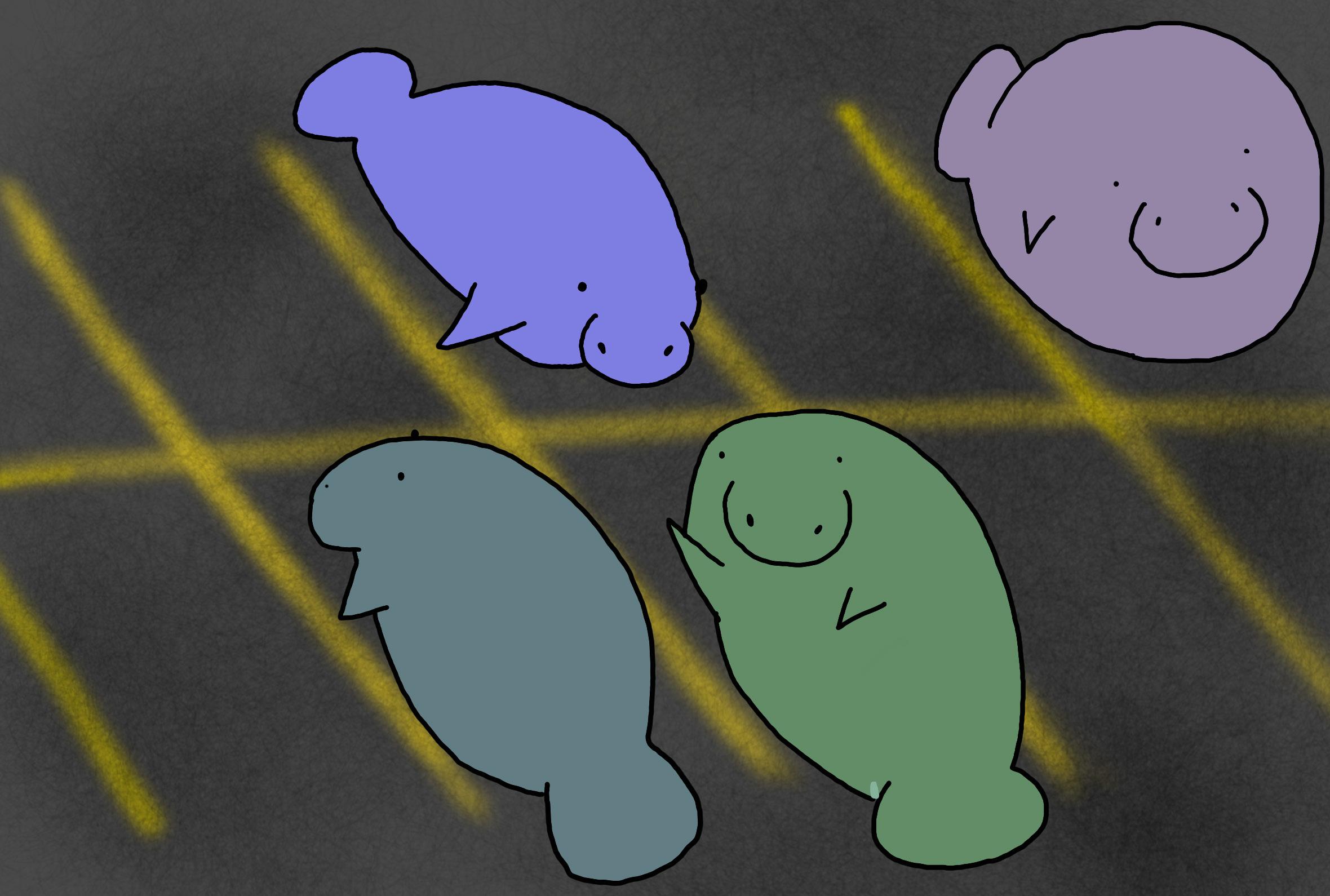
3. Independence Day Event Parking Restrictions
While we’re talking about movies called “Something Day,” what about the 1996 science fiction film “Independence Day?” I haven’t seen it, but a summary I found online leads me to believe that it depicts a massive alien invasion of the Earth. That sounds like the kind of thing we should have parking restrictions for, if you ask me. Maybe something like “Iin the case of an Independence Day Event, anybody can park in Admissions spaces, because we’re all going to die anyway.” Frankly, it seems irresponsible that there’s not a plan in place for this already.
4. Thursday Event Parking Restrictions
Everyone loves an event named after a day of the week—think Tasty Tuesday, the Sunday Scaries, or this thing I just came up with called Wibble Wobble Wednesday. Why not spread the love and apply this foolproof formula to parking restrictions? How about: “In the case of a Thursday Event, all cars with license plates that end in an even number can only park by the Farm and Ecological Preserve, unless it’s the last Thursday of a month that ends in ‘y,’ in which case we don’t care.” I think this would spice up boring old Thursdays and give everyone a nice, regularly scheduled taste of parking regulation fun. Let’s make it happen!
5. Manatee Event Parking Restrictions I think we can all agree that manatees are
Nicholas Tillinghast/The Miscellany News.
extraordinary creatures, and that if one were ever to visit campus, it should be allowed to park in any space it wants. To make sure everyone is aware of their responsibilities in case of such a Manatee Event, it is imperative that appropriate Manatee Event parking restrictions are drawn up and publicized as soon as possible. Maybe something like this: “In the case of a Manatee Event, all students must move their cars off campus or, at the very least, wait in the car in case the manatee decides it wants the parking spot that car is occupying.” Encoding these restrictions into the parking rulebook as soon as possible is the only way to ensure that these noble animals receive the respect they deserve if and when they park on Vassar’s campus.
HUMOR
Slinking around at 2 a.m. every night
Nicholas Tillinghast Professional Slinker
One thing that me and Margaret Thatcher have in common, besides funneling money to paramilitary death squads in Ireland, is that we’re both up pretty late into the night consistently (or “were,” in Margaret Thatcher’s case, because she is actually dead!). Margaret Thatcher only slept four hours a night, which I can only take to mean that she did what I do consistently, which is slinking around the house at 2 a.m. and trying not to wake anybody up.
This wasn’t always who I was. It just so hap-
pens that my last semester (fingers crossed!) at Vassar College is one in which I consistently have no reason to get up before 11 a.m. most days and on Wednesdays, there is no wake up time at all. So I work well into the night on the reg.
I don’t recommend it—there’s almost zero chance that you can contact anyone about anything at 2 a.m. in this time zone and expect them to actually respond, which really sucks. My parents firmly exist in reality, and so they go to bed at 9 p.m. We’re in the same time zone, but functionally we live five time zones away from each other. Sometimes I wish my parents were from the West Coast
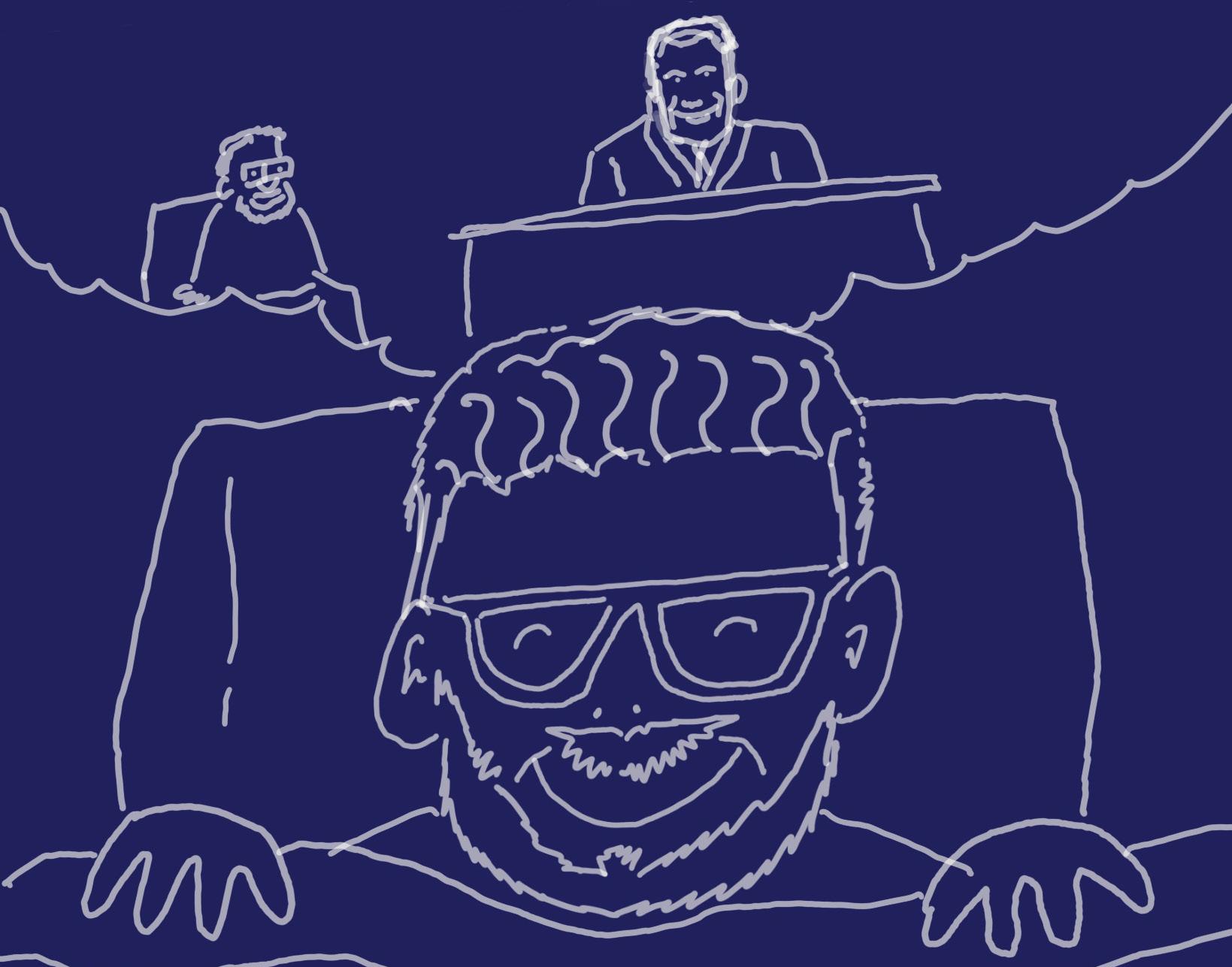
because at midnight, there’d be a chance that they weren’t asleep and I could send them my funny musings and they could pretend that they’re funny more immediately. But alas, they live on New York time, and I live on Hawaii time.
This is how a typical late night goes:
11:45 p.m.
Hearing that library bell the second time is enough to lurch me out of my chair and onto the streets of Poughkeepsie.
12:30 a.m.
I’m back home, deep in the work. Really just locking in. Not thinking about Jimmy Fallon at all.
2 a.m.
This is usually when I get visited by three ghosts and they’re always sooooo moralistic. Cool it with the didactic shit about why I suck, let’s play Fortnite instead and not think about Jimmy Fallon.
3 a.m.
This is peak scurrying/slinking time. The hunger really sets in at 3 a.m. so I go downstairs to the kitchen. I’m so hungry I could eat an entire horse but my pantry only has raisins. I’m very hungry so naturally, I’m thinking about food and not Jimmy Fallon.
4 a.m.
This is usually the time that I contemplate the fact that me and Jimmy Fallon are experiencing the same night at the same hours, which is really magical. I recently looked up on the interwebs if there was any public information about when Jimmy Fallon goes to
bed every night so we could go to bed at the same time (which hopefully is earlier than when I currently go to bed) so it could be like our thing that only I know but maybe one day when we finally meet I could tell him and then it could be our thing together, and it would be this really special moment between us that we would remember for the rest of our lives. Since it’s 2025, my Google search about when Jimmy Fallon goes to bed was punctuated with a condescending AI response:
“While there’s no publicly available information about Jimmy Fallon’s exact bedtime, ‘The Tonight Show Starring Jimmy Fallon’ tapings typically end around 6:30 P.M., meaning he likely goes to bed sometime after that, possibly in the early evening.”
Such a wide window! What am I supposed to do with that??? They’re not even sure he’s getting through the whole show!! A lot of the AI replies read to me like how you would answer a kid when they ask you an impossible question and you’re just sort of grasping at nothing in trying to answer. This one in particular almost sounds like it’s trying to justify the concept of early bedtimes too. “7:00 is a perfectly reasonable bedtime to have. ‘The Tonight Show Starring Jimmy Fallon’ tapings typically end around 6:30 P.M., meaning he likely goes to bed sometime after that, possibly in the early evening, just like you, Sport!” Screw off, AI! You’re not my mom! Sometimes I’d rather they just tell me the answer’s just not there. Stop trying to answer the unanswerable. The internet doesn’t know when Jimmy Fallon goes to bed and I have to accept that.
4:01 a.m. I sleep.
Forecast predicts week of ‘Fuck Your Life’
Wren Buehler Bug Muncher
The weather has been miserable of late.
From freezing rain to snow to the localized version of the Ten Plagues levied against Raymond House, we’ve all been complaining about the various liquids the sky has unleashed upon us. But, there is no rest for the wicked, and there are few more wicked than the Vassar student body. Indeed, the
weather app has foregone traditional climate descriptions entirely, reading instead “Fuck Your Life.”
Asked to comment, Raymond House Advisor Jared Hunter said, “They have killed my firstborn son. My heart is hardened to your pleas.” As such, we spoke to our weather correspondent, Gale Force, for more information.
“The problem,” she explained, “is that basically, uh, the polar vortex…” She mumbled
the next few sentences, and then concluded, “climate change, weather patterns, yeah. Alternatively, the negative energies created by the Chemistry department are attracting the ire of the rain god Tlaloc.”
Further investigation of the app revealed additional details—while “Fuck Your Life” is forecasted to last for the next month or so, several additional trends are predicted. Next Monday’s temperature is listed as “Cold As Shit,” while the precipitation is “Why Even
Get Out Of Bed?” In the following days, however, it warms up to “Just Hot Enough For Puddles To Form,” with an accompanying prediction of “Honestly Just Pack Up And Leave.” The week concludes with a temperature of “Miserable,” and weather of “Die.” As of press time, The Miscellany News recommends that all students begin living in the steam tunnels and eating whatever insects they find in there like some kind of horrible morlocks.
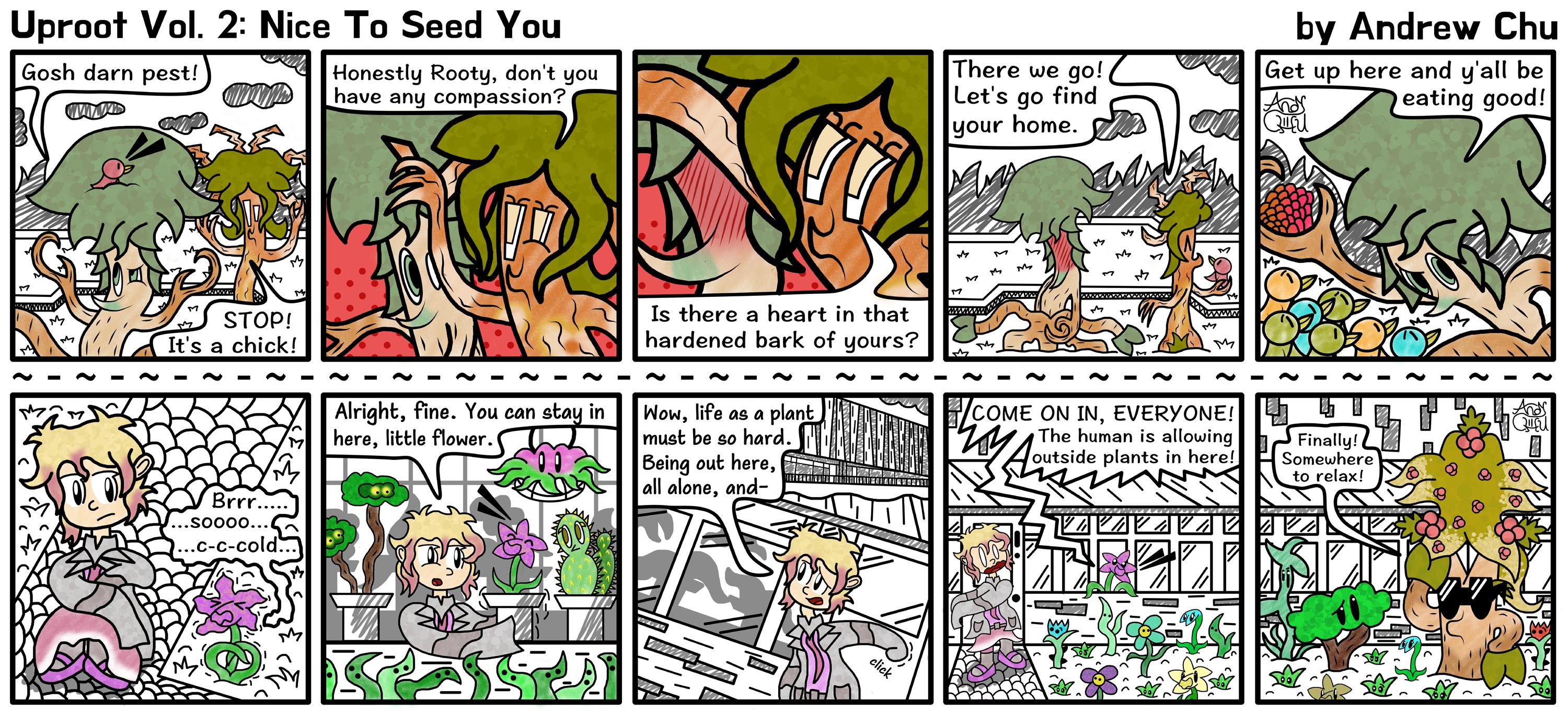
HOROSCOPES
Emma daRosa Ol’ Scone Bra

ARIES March 21 | April 19
In the coming week, you should try making buffalo chicken dip in the Deece. Don’t worry, nobody will look at you weird while you wander around with bowls of chicken and buffalo sauce. Just walk with confidence. You know what you’re about.

TAURUS April 20 | May 20
RESIST THE URGE to spend all your Arlington bucks before spring break. There’s gonna come a dark dark time at the end of the semester that only one thing can fix: “Tony’s Taco” from Bacio’s.

GEMINI May 21 | June 20
Watch out the next time you go to get Greek yogurt at the Deece. Unfortunately, the stars have indicated someone is going to replace it all with grout this week.

CANCER June 21 | July 22
I know you’re really sad about the lack of fried eggs and everything; we’re all feeling the shortage. I must inform you though, the best way to handle these emotions is NOT to egg PB’s house with scrambled eggs. They don’t even stick, you’re just throwing eggs into her bushes. Can’t even see ’em.

LEO July 23 | Aug. 22
This is the week someone is gonna catch you pocketing Nutrigrain bars at The Retreat. When it happens, the only appropriate course of action is to drop a Molotov cocktail. Keep one on you. Don’t let the man win.

VIRGO Aug. 23 | Sept. 22
I sense a sort of piqued curiosity plaguing your soul this week. Try an experiment! How many Deece scones can you fit in your bra? (I’ve gotten to nine.) What would happen if you mixed applesauce and carbonated water? Maybe it would be cool.
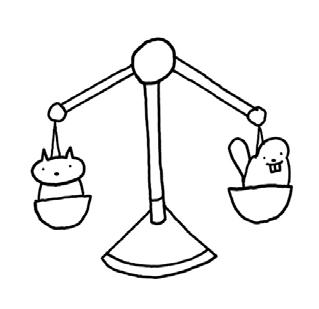
LIBRA Sept. 23 | Oct. 22

SCORPIO Oct. 23 | Nov. 21
I know the guilt is getting to be too much. The stars have told me every single Libra at this school has at least three Deece dishes in their room. Returning them would be WAY too embarrassing. Your best move would be to throw them off the Mid-Hudson Bridge. Plastic dishes might float—better fill their pockets with rocks first.
This week you should try to exercise your creative faculties. Might I suggest a performance art piece? Just get naked and lie where they put the Deece pizza. I bet it’s super warm and it’ll be like a critique on society. Or on shrimp pizza. Put a shrimp on your crotch.

SAGITTARIUS Nov. 22 | Dec. 21
You guys are really gonna have the best week. Like way better than everyone else. You’re gonna be the first person to get tomato soup in the Deece, plus you’ll have a booth to yourself, plus you’ll get the first scoop of mint chip ice cream. Watch your back though, nobody likes the bourgeoisie.

CAPRICORN Dec. 22 | Jan. 19
I know you’ve been trying really hard to make new friends this year. This week is your week buddy! All you’ve got to do is plop down right in the middle of the table when the rowing team has breakfast super early. Just talk about how much you love their uniform onesies and stuff, you’ll fit right in!

AQUARIUS Jan. 20 | Feb. 18
The danishes at the Deece just aren’t that good. Let it go. There are plenty of other yummy things. Grab a croissant and accept it. I feel for you, but you’ve gotta stop letting the pretty colors trick you.

PISCES Feb. 19 | March 20
You’ve gotta be careful at Street Eats this week. Everyone there HATES you so they’re going to put KEYS in your FOOD. You deserve it, you son of a bitch.
OPINIONS
Identity politics exacerbates false consciousness
Soren Fischer Opinions Editor
Identity politics is an ideological framework based on shared experience that allows marginalized groups to uniquely advocate for their rights and address systemic inequalities toward their own community. This form of “community building” claims to give space for celebrating individual and group differences—which are vital to redressing historical wrongs—while also demanding the formation of alliances that bridge diverse experiences and empower collective action against entrenched systems of oppression.
Movements rooted in identity politics should actively incorporate class analysis, thus revealing how capitalist exploitation intensifies the various forms of identity-based discrimination. In doing so, these movements can dismantle not only the overt symbols of oppression—as demonstrated through instances of hate crimes or media depictions—but also the underlying economic foundations that have allowed them to persist, even after systematic discrimination has been thought to have been done away with.
By hyper-focusing on identity-based struggles, we risk obscuring the larger economic structures of inequality that underpin our society—exacerbating the phenomenon of false consciousness, a Marxist theory that suggests many people fail to see the true nature of their social and economic reality.
Building political coalitions solely around particular identities—whether based on race, gender, sexuality or other markers—can inadvertently narrow the focus of political struggle to an exclusionary degree. This fragmentation weakens the potential for unity, resulting in broader, systemic issues being obscured, and the gross reality of these inequalities being hidden.
Instead of confronting the systemic exploitation inherent in oligarchic rule—power held by the few—many adopt narratives that demonize perceived “out-groups.” In the American context, for example, immigrants are often scapegoated as the source of working-class struggles, like job insecurity and housing shortages. This shift creates a self-perpetuating loop in which people support policies that ultimately do not serve their best interests. These narratives mask the real culprits: Economic systems and other entities within the powerful elite that fragment solidarity among those who should otherwise unite against exploitation.
This approach risks defining economic struggle by only identity, which undermines core principles of socialist thought: Classbased discrimination underpins every aspect of life—and effectively, political institutions must be a class-based struggle. This emphasis on class is not about ignoring the historical struggle based on race, gender, sexuality or the like; rather, it integrates them into a comprehensive understanding of systemic exploitation. The broader point is that while racial disparities could be eliminated, a fundamentally unequal economic system may persist.
Political energy should be directed toward dismantling the economic systems that enable a small coalition of ultra-wealthy elites to code the law in a way that exacerbates wealth inequality. Rather than separating based on individual and select group-based struggles, it calls for linking identity-based issues to underlying economic realities that shape everything in society.
Affinity spaces and groups at Vassar are essential for providing safe and comfortable opportunities for marginalized identities to freely express themselves with like-minded and like-bodied individuals. Primarily focused on embracing one’s culture, how
much do these forums engage in dialogue that encourages growth beyond these tightknit spaces? No, this is not specifically about identity politics, but rather about examining how cultural spaces differ from political spaces that are designed to support a particular identity in confronting societal issues.
Is there potential to harmonize these affinity spaces as an opportunity to better connect the understanding of unique identity-based struggles with that of underlying and widespread economic exploitation? The suppression of minority-based culture is not mutually exclusive from economic development, but deeply intertwined elements of the same oppressive structure. I think that acknowledging that interconnectedness is essential to bridging divides and forging alliances that can effectively challenge multifaceted inequality.
The limitations of identity politics can be overcome by cultivating political spaces that promote intersectional solidarity while never losing focus on the foundational economic forces that drive societal efforts, such as ending poverty and income disparities across racial lines. It is essential to engage in sustained dialogue—between affinity groups and labor movements, for example—that actively links cultural liberation and economic reform. Activism means prioritizing both the celebration of diversity with the critical analysis of exploitative forces that help us better understand the circumstances that we are in. Innovative thinking will create strategies that challenge the dominance of fragmented struggle into collective action.
By embracing a dual focus on cultural recognition and economic liberation, movements can expose how systemic exploitation manifests across different layers of society.
This could be accomplished through creating platforms where individuals from diverse backgrounds can share their expe-
riences and insights while jointly critiquing the policies and power structures that maintain the status quo. At Vassar, this might involve establishing a larger, more well-equipped student center that brings together the LGBTQ+, Women’s and ALANA Centers, fostering efficient dialogue between them.
Integrating class analysis into identity-based organizing should be a crucial focal point, offering a powerful opportunity to bridge local struggles with global movements. Wealth inequality is extreme in higher education, even here at Vassar, so the importance of situating personal narratives of lower- and middle-income students into dialogue within a wider critique of broader inequalities might help foster transcendence beyond individual identity markers.
Ultimately, combining these analytical frameworks enriches political discourse and empowers communities to find real alternatives. While identity politics has played an important role in mobilizing marginalized communities, limitations become apparent when it fails to address the structural economic oppression of the United States that has significantly worsened in the past half-century.
As movements continue to evolve, balancing cultural celebration and unwavering critique of economic inequalities becomes even more critical in the face of increasingly consolidated wealth.
This integrated approach can improve our collective understanding of intersectionality, create a stronger base for collective action and build alliances capable of dismantling entrenched systems of power and elite-backed division. We could keep talking about this strategy, or take the necessary step toward realizing that working solidarity is not just an ideal, but a real possibility with education as the foundation.
Losing the art of the keepsake
Yaksha Gummadapu Features Editor
This past summer, I lived with a journaler. My suitemate, Catherine Philips ’26, was a regular Joan Didion, writing away in a windowless room on the fourth floor of Main. More often than not, accompanying her swoopy romantic handwriting would be a physical keepsake, usually a receipt, a ticket or a photograph. I was in awe. I have considered myself a writer saince I learned the alphabet, but I could never keep a journal for the life of me, much less remember to include personal memorabilia in the process. Every time Catherine would press the “print receipt” button at checkout, I cringed thinking about my Bank of America notification being my only reminder of a day well-spent. She was turning her daily life into art. My traces of living were being recorded in an alienating binary code. Why was I so uncomfortable with the fact that most of my life was being chronicled on my phone? Talking to other friends
about the subject revealed that it had been years since any of them had held a movie ticket in their hand or stuffed a receipt into their pockets. And that made me a little sad. I started to wonder how much of my life is slipping through the cracks of the digital landscape. As the world around us becomes erratic and abstracted through the technology intrinsic to our daily lives, it became clear to me that Catherine’s journal is more important than I realized.
Because I consider a live musical performance the definition of entertainment, I could not help but focus most of my attention on the loss of a concert ticket as a keepsake and the broader implications of its digitization. I jump at any opportunity to watch musical artists live—both those I revere and those I have never heard of, and I know I am not the only one. Concerts have long been associated as a hallmark of youth culture one looks lovingly back on. You will never forget seeing that one band live—for me, it was The Marías. That is why people used to collect their con-
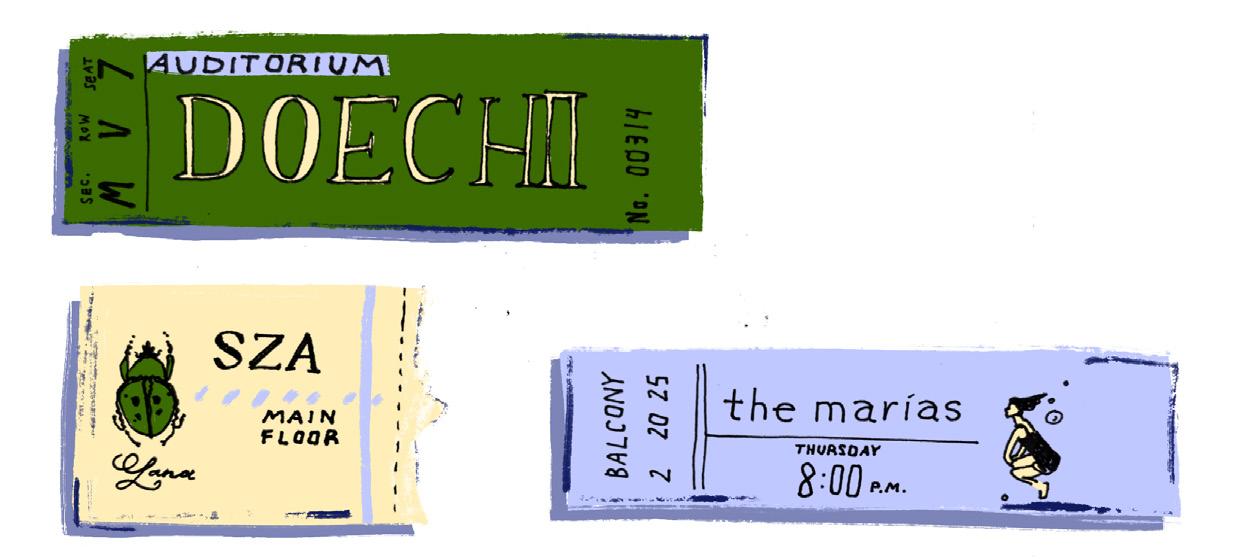
cert tickets and store them in shoeboxes or a desk drawer. As you racked up the colorful slips of paper, you also made memories. But now, concert tickets are on a bright white screen detailed with the blue Ticketmaster logo. A barcode that is scanned and then gone. It disappears into the void. For the average concertgoer, you lost a piece of art reflective of the performer’s current creative direction and a keepsake. But with every event, the digital ticket contributes to the downfall of a form of commercial art, akin to album cover artwork. All of this is being sacrificed for efficiency and data collection; you scan that barcode, and you leave a digital trace that can be used.
Digital tickets dissolve individuals into vats of data. The companies that own the app where you purchase your tickets have access to your preferences and can then cross-list this with other data that has been collected from your digital profile to curate ads and offers for you. At no point is your digital ticket just a ticket. It is an invaluable insight into your life that can be capitalized on. So it is in any ticket seller’s interest to do away with the physical concert ticket in exchange for a chance to profit off of you as long as you choose to attend concerts. Not only does this transition to digital tickets represent a loss of art and design that can be used to reminisce about the important moments of your life or the music industry, but it is also a gift horse. You give up some bits and pieces of your privacy and an irreplaceable keepsake just to streamline a corporation’s path to profit.
It would be untruthful to claim that my worry about the loss of the physical keep-
sake is solely due to these surveillance and economic issues. Ita comes from a place of sentiment. There are, of course, several different ways to remember concerts and other meaningful events. But the concert ticket is a unique cross-section of art and an experience that no longer exists. You could take photos and videos. But even if you print out the images, aside from the issues of quality, that photograph is not really given to you by the artist in question. It is another form of art, brought into existence by your attempt to capture a memorable instance in your life. You could buy merch, but a ticket is merch that is included in the price you pay to attend in the first place, so not only do we pay drastically more for concert experiences today, but we also are getting less out of them. A concert ticket is a physical and concrete way to define all the joy I am experiencing as the years fly by and the ground keeps shifting under my feet. But this emotional connection seems to be intuitive, pushing me to ask why something that means a lot to me and lots of other people can be so easily structurally eliminated. Catherine takes time out of her day to write down her thoughts and tape up a concert ticket next to it; my inability to do the same bothers me. Clearly, physical keepsakes matter to us, yet they are disappearing. I am completely aware that with all the late-stage capitalism-relevant tech issues in our world, this may not be the digital hill to die on. But what does the loss of the physical keepsake mean in the context of this atmosphere? For me, it rings alarm bells as an erasure that is emblematic of larger losses to come.
Exploring BookTok’s impact on literature
As a lifelong avid reader, who is constantly looking forward to my next trip to Barnes and Noble and always asking for book recommendations, I took to the internet communities of Bookstagram and BookTok. Especially during the COVID-19 pandemic, I spent more and more time scrolling TikTok, absorbing the recommendations of people I had never met before. This had a twofold impact on me: It lengthened my “To Be Read” (TBR) list, which now numbers in the hundreds and I noticed that the majority of the books that “blow up” on social media are characterized by ease of literary consumption. Simply put: The most popular books were the ones that were easily digestible. More recently, I have noticed an increase in discussions of more substantive books, but BookTok still tends to be overtaken by genres like “Romantasy,” with authors pumping out the latest installation in their series every few months.
I have been thinking about the merits and drawbacks of this phenomenon. It could be argued that literature as a whole is on the decline or that platforms of discussion are giving unbalanced attention to lower-quality novels over stories that take more mental and emotional effort, both to write and to read. For a book to “go viral” on TikTok, it usually has to appeal to a wide audience, and it is usually a low-effort read.
TikTok itself is characterized by its infinite feed of quick media and its algorithm that caters to the individual’s interests through the “For You Page” (FYP). I have
seen this mimicked in some bookish TikTok sensations. Most people discussing books on this platform recommend stories based not on writing style or even necessarily plot, but on the tropes the book hits on, like the infamous enemies-to-lovers story arc. This formulaic style of recommendation has echoed itself in the typology of books being published post-BookTok. Most of the novels I have read from BookTok recently have been enjoyable but also predictable and unchallenging.
However, this is not to say that every book that blows up on social media lacks value. On TikTok, I have found many literary fiction books that I love and find thought-provoking. It has even reignited some of the classics that are not usually read outside of English class, like “Wuthering Heights.”
Another positive aspect of BookTok is that well-written modern literature that stands outside the traditional—and problematic—canon of classics is getting a foot in the door, so to speak. Many of my favorite books, from female authors or other underrepresented groups in the publishing industry, have gained acknowledgment through word of mouth from genuine admiration. I think a good number of “modern classics” have found their way to, or been “discovered” by, BookTok: Some of my favorite literary BookTok authors are Donna Tartt and R. F. Kuang. Inspiring more people to read and fostering a sense of connection seems to me the most important part of literary discussion online, and I think BookTok is a great example of that.
Not to mention, social media is making more readers out of people who probably
would not read without the encouragement of TikTok and Instagram. In fact, BookTok is playing a role in keeping bookstores in business. Before the pandemic, Barnes and Noble was struggling, having closed over 400 of their locations. With BookTok bringing more people into bookstores, partially for the instant gratification of fast-paced romance and “Romantasy” novels, sales and business are better. For the first time since I can remember, I have heard about the opening of new Barnes and Noble stores, rather than the existing ones closing. Profits from authors with large BookTok followings have hit $760 million, per an economics review. Any platform driving up book sales is a good thing, because even when people buy less politically or intellectually substantive books, all types of fiction reading can lead to more, and the experience of literature is always a net positive.
As social media contributes more and more to book sales, “#BookTok” tables appear often in bookstores featuring internet sensations, a phenomenon I have grown accustomed to in my hometown Barnes and Noble. While these books have already reached a height of popularity based on easy consumption, this also increases book sales in general. Madeline Miller—known for thought-provoking reimaginings of ancient history—owes a lot to the success of her TikTok-famous debut novel, “The Song of Achilles,” according to a New York Times article.
It also cannot be ignored that these social media platforms create echo chambers, politically, ideologically and culturally. The publishing industry is doubtless a stage on
which discrimination is played out on a high level and this can be reflected in the trends of BookTok and other social media platforms. According to a study on “The Influence of BookTok on Literary Criticisms and Diversity,” “cultural matching,” a process where reviewers tend to favor writers with similar interests and cultural backgrounds—which can be seen across the publishing industry— is also prevalent on TikTok. Since the TikTok algorithm creates such a personalized FYP, people from less diverse places may consequently have less diverse feeds. While these potential echo chambers are problematic, I have also seen people using the app to spread awareness about the importance of reading diverse arrays of stories from authors of different backgrounds. This could be because it is not publishing companies, authors or experts in literary fields recommending books, but fans.
Since anyone can start a BookTok account, stories that blow up on the app come from ordinary consumers. This has a dual effect of making books more popular because of genuine connections and the fast spread of information, while also shifting the attention of readers to works that are easy to enjoy and supply the instant gratification that many people seek out when reading.
I have recently found myself of the opinion that while they may not be the most intellectually stimulating books, sometimes a “guilty pleasure” story is just the right thing for a rainy day with a cup of tea! When it comes to reading, there is a place for both academically enriching books, “trashy” romances and everything in between.
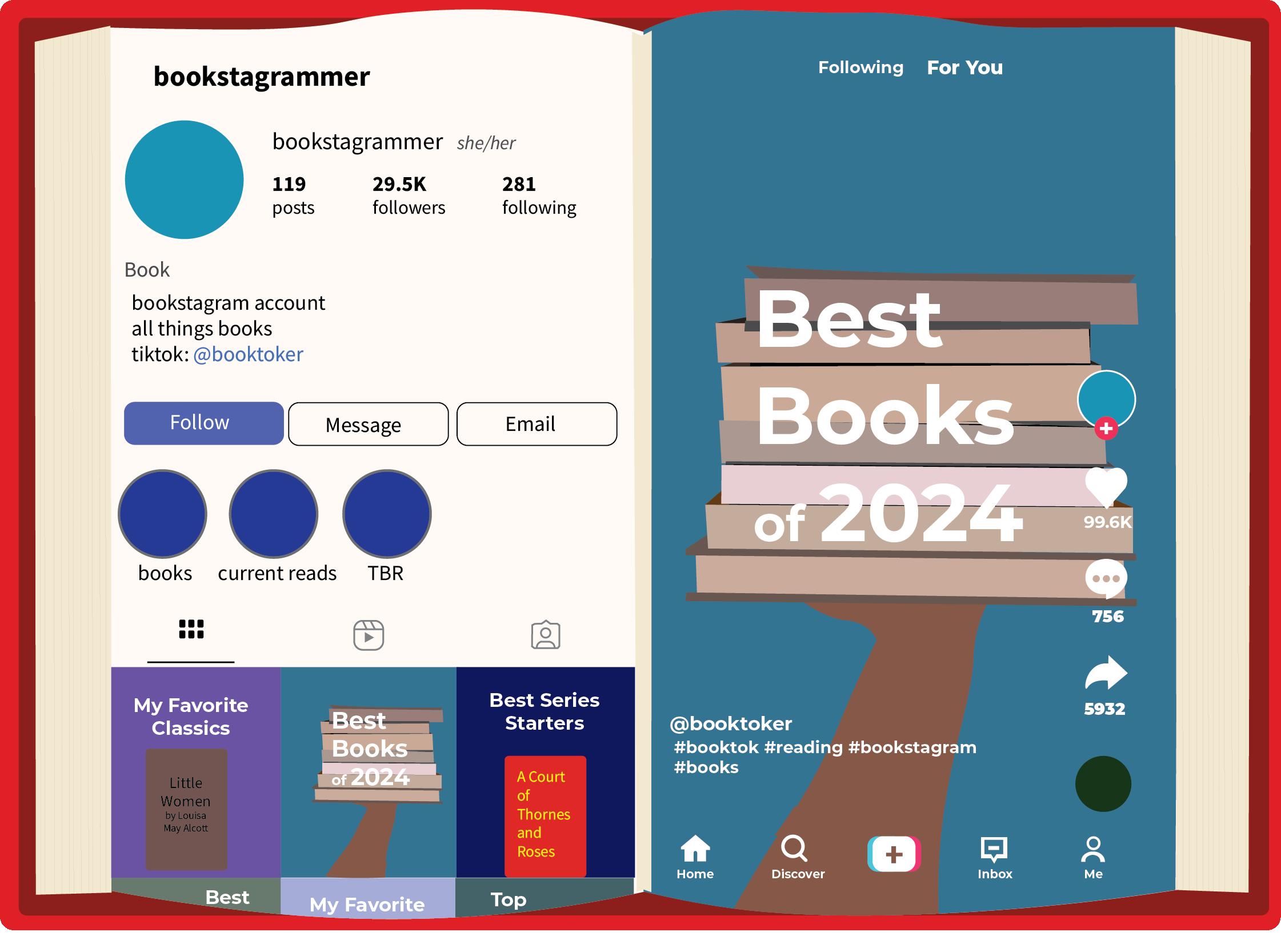
Vassar Athletics winter roundup
Vassar winter sports have been showing out across courts, pools and more. As each team approaches the end of their season, we looked at how they are doing as they approach the finish line.
Men’s basketball
The Vassar men’s basketball team has been building momentum this season. Following a 66-48 win over Rensselaer Polytechnic Institute (RPI), the Brewers moved into first place in the Liberty League, tied with RPI at a conference record of 12-4. The squad has an overall record of 16-7 and has won their last two games. The four conference losses come against Ithaca College, Saint Lawrence University, Skidmore College and Union College. Saint Lawrence, Skidmore and Union all sit in the bottom half of the Liberty League standings, reflecting the parity of this squad’s season. Leading the team so far has been Shea Fitzgerald ’27, Avery Lee ’27 and Nate Denham ’26 who all average double-digit points, respectively 20.8, 16.3 and 10.2, per game. Fitzgerald’s 20.8 leads the Liberty League in individual points per game, three ahead of the runner-up. In fact, this Brewers squad leads the Liberty League in points per game with 77.1. The team has two more regular season games left this season before they make their Liberty League playoffs run.
Women’s basketball
The Vassar women’s basketball team heads into their final stretch of the season sitting second in the Liberty League at a conference record of 14-2 and an overall record of 18-5, having won their last five games. The squad’s dominance is due to their lights-out shooting, led by Tova Gelb ’25, Sierra McDermed ’26 and Julia Harvey ’25, and reflected in their incredible Liberty League-leading game scoring margin of 11.9, with the next closest being 6.3. Not only do Gelb, McDermed and Harvey lead the Brewers in points-per-game, but they also sit first, second and third, respectively,
in the Liberty League for points-per-game. Heading into their two final games of the season, the squad is looking to repeat their 2024 result—a Liberty League Championship—and build on it in the national championship tournament.
Men’s swimming and diving
The Vassar men’s swim and dive team sits seventh out of ten in the Liberty League after a rocky season that featured highs and lows alike. The squad opened up their campaign with a resounding victory over Bard on Oct. 19. Following a challenging stretch, the group rebounded against Pace University and then a week later against Union College before capturing a second-place finish at the Skidmore Sprints. Next, the team heads to Ithaca to compete in the Liberty League Championships during the three-day competition from Feb. 19 to 21.
Women’s swimming and diving
The Vassar women’s swim and dive team has put together a solid season featuring a mixed bag of results against strong competition. The squad now sits sixth in the Liberty League heading into their final few days before the Liberty League Championships in Ithaca, New York on Feb. 19 through Feb. 22. The team got out to a hot start with back-to-back wins against Bard and Brandeis before a three-meet skid. The team found their footing with two wins in their latest four races, including a statement victory against Mount Holyoke College.
Men’s indoor track & field
The Vassar men’s indoor track and field season features five races prior to the season’s Liberty League Championship meet, and in the first of the four, the Brewers have performed well. The team opened their indoor season on Dec. 27 at the West Point Crowell Open. Highlighting this meet was Senior Tim Buchan who posted a first-place finish in the mile with sophomore Sean Miller defeating Division I competition to earn a first-place finish in the 3000-meter. Next, at the Bomber Invite on Feb. 1, sophomore Max Frazee earned
a first-place finish in the 5000-meter. The Brewers competed next at the Blue and Orange Invite on Feb. 8 where Miller and senior Jose Magaña each posted All-Atlantic Region Track & Field Conference (AARTFC) marks in the 3000-meters. Most recently, the group competed at the New York University (NYU) Division III Invite where Miller once again performed, posting a runner-up finish in the 800-meters with a time of 1:56.02. The squad will wrap up their season in three championship meets: the Liberty League Championships on Feb. 28 and March 1, the AARTFC Indoor Championships at Ithaca, New York on March 7 and March 8 and finally the NCAA Indoor Championships on March 14 and March 15.
Women’s indoor track & field
The Vassar women’s indoor track and field season opened up at two meets simultaneously: the Sharon Colyear-Danville Season Opener at Boston University and the West Point Crowell Open in West Point, New York. Sophomore Haley Schoenegge amazed once again when she broke her own school record time in the 3000-meters in Boston. At the West Point Crowell Open, the team showed out while first-year Amanda Hanrahan set the new indoor school record in the weight throw. At the Crowell Open, the sophomore pair of Adelaide Nyhan and Norah Reade finished second and fourth overall, respectively, with Nyhan being the top Division III finisher in the race. Days later at the Bomber invitational, the Brewers dominated when Schoenegge unsurprisingly won the 5000-meters, defeating the second-place finisher by over 40 seconds. Sophomore Acadia Helfand scored a third-place finish in 19:15.80 along with first-year Sophia Marchioli crossing the finish line in fifth place in 19:18.80. First-year Hadley Snell posted a sixth-place finish with a time of 19:22.06 followed by classmate Chloe Bibula earning an eighth place finish in 19:32.28. The group continued on at the Blue and Orange invite at Utica College where multiple Brewers earned multiple victorious results. Sophomore Jahmilia Dennis post-
ed a meet-best leap in the triple jump while Nyhan’s stellar season continued with a first-place finish in the 800-meter. Most recently, Schoenegge and Dennis showed out in Boston and New York City and the Valentine Invite and NYU Division III Invite, respectively. The sophomore national champion posted the 12th fastest Division III time in the mile, competing in a loaded field of largely Division I runners. Meanwhile, Dennis posted the 19th-best triple jump result nationally at the NYU Division III Invite. The squad will wrap up their season in three championship meets: the Liberty League Championships on Feb. 28 and March 1, the AARTFC Indoor Championships at Ithaca, New York on March 7 and March 8 and finally the NCAA Indoor Championships on March 14 and March 15.
Men’s squash
The Vassar men’s squash team posted a solid season with a finishing record of 7-10. The group got out to a strong start with a 4-1 record in their first five games before a nine-game skid where the squad went 1-8. At the Liberty League Championship the team finished on a strong note, defeating Bard College, and toppling Hobart College for the first time since 2006.
Women’s squash
The Vassar women’s squash team had a disappointing season that culminated in a 3-13 record. The squad had a solid start to their season, defeating both Fordham University and Bard College in their first five games. After the pair of wins, the team went on to lose ten straight matches before ending on a high note with a win over Bard College in the Liberty League Championship.
Conclusion
As the Vassar Athletics winter seasons come to a close and teams approach their championship tournaments and matches, the Brewers look poised for success. Not only are squads pursuing conference glory, but bolstered groups look to find new heights during their national championship campaigns.

We predicted the entire NFL season
Allen Hale, Nicholas Tillinghast Editor-In-Chief, Humor Editor
Predictions are finicky. Was picking the Broncos to win against the Chiefs in Week 10 a bad prediction if they lost on a blocked field goal at the end of the game? Moments like this are worth looking back on when, after 272 regular season NFL games, we were just three games apart in game-predicting accuracy. Nick went 168-104 on picks, and Allen went 165-107. We each started 11-5 in Week 1 and had our personal best winning percentage (12-2) in Week 6. In our final, Week 18, predictions, we were three games apart. When game margins are often so thin, can you crown a definitively superior prognosticator; when a Vikings-Rams game ends on a blatant no-call face mask; when a Bears-Commanders game ends with a fluke Hail Mary success on a ball that did not even make it to the endzone?
We set out in September hoping to find a clear answer to the question of whose knowledge and instincts about the NFL were sharper, committing to a fairly low-tech but robust approach: We handwrote out each week’s schedule on scraps of printer paper, circled our predicted winning teams and highlighted the correct picks from Sunday afternoon to Monday night. The results were displayed on one of our living room walls for any of our house guests to see, even the bad weeks. After months of action, the completion of the 2024 NFL season calls for some reflection.
Allen’s section
I do not know ball. The time I invested in the NFL this season was nothing impressive. At best, I watched box scores, followed many deceivingly concise—yet frequently informative—media narratives and kept up to date with notable trades or injuries. My Patriots made me sigh. I picked the Ravens every single week.
And despite all of this amateur fandom alongside a serious lack of RedZone watching, I came out the other side with a decent winning record, although I was ultimately bested by Nick. Overall, I was a bit more invested in the NFL’s general happenings than usual.
However, I personally feel that my result is not singularly impressive with recent history in mind. Save for the Washington Commanders or Minnesota Vikings, few franchises had notable turnarounds or completely fell apart, making 2023 a reliable index for this year’s regular season predictions.
Still, I was surprised—and let down—by some season-long performances in particular. Although I felt both groups would be somewhat competitive, the Eagles and the Bills each put together impressive regular seasons after much off-season chatter from doubtful viewers, including myself. The former’s slow start especially deceived me, involving early losses to the Falcons and the Buccaneers that I failed to predict, alongside closer-than-expected contests with the Saints and the Browns. Correcting my Eagles picks across Weeks 1 through 8 would have been enough to tie Nick, had I anticipated their trajectory better.
On the flip side, the Saints hot start had me convinced they could be legit, which they obviously never were. Derek Carr deceived me. Saints over Eagles was one disgusting and costly blunder.
In the AFC, The Steelers became Nick’s rock, often netting him crucial points in weeks where I had picked against them. My Steelers-related misses in Weeks 1 through 10 also cost me the competition. I could never trust their quarterback situation; this hesitation finally benefitted me in the closing weeks of the season.
The NFC West consistently confused me. Whenever I was high on a roster over there, fortunes quickly flip-flopped. The 8-9 upand-down Cardinals especially peeved me. It felt as if anytime I picked against them, they won, and vice versa. Predictions created bizarre yet consistent enemies. I likewise cursed the Texans, led by quarterback C.J. Stroud.
Circling back to the Super Bowl teams, I (incorrectly) picked three semi-upsets against the Chiefs during the first half of the regular season, assuming that their close-win strategies would soon be punished; this hardly happened until the Super Bowl. Again, these isolated situations were enough to lose the entire season, a devastating realization I had while
writing this article. Cumulatively going 11-21 during Weeks 2 through 3 did not help either.
Nick’s section
In more recent years, I have been fairly invested in the NFL with my team, the Buffalo Bills, being a legitimately talented, fun-towatch franchise. That investment naturally extended to the entire league. Unlike Allen, I am a fairly consistent viewer of sports talk shows, most notably the boisterous “First Things First” and the arrogant “The Herd with Colin Cowherd.”
While these were good reference points for making picks, a lot of the takes in sports media are just bad. Entertaining, but bad. I started using ESPN’s set of no-frills “expert” picks on their website late in the year—a set of 11 sports media people who just pick winners each week. Looking at those helped me pick in context, and ultimately avoid missing on picks that were far more lopsided than I realized.
At the end of the season, I skimmed through the weeks to see if either of us had picked right on any game that all 11 ESPN prognosticators had called wrong on. I picked three: Broncos over Jets in Week 2, Rams over 49ers in Week 3 and Broncos over Jets in Week 4. Allen picked none. You could really point to any three-game stretch as the reason that I ended the season at a higher record than my colleague Allen, but these picks are the ones I am most proud of. It is not unsurprising that they all occurred early-season. This is the time of year when the pecking order is in flux and bold picks are more often rewarded. Not relying on ESPN at the time of year was maybe even advantageous.
At my best, I was picking the Steelers to win without fail for the first 12 weeks, when they were rattling off surprise win after surprise win with a below-average quarterback room. Mike Tomlin can just make magic happen in the regular season. Outside of the Bills, this was probably the team I favored the most throughout the season. At my worst, I was picking against the Chiefs, thinking they were in a trap game practically every week and, inversely, picking the Browns to win three weeks in a row late in the season—you
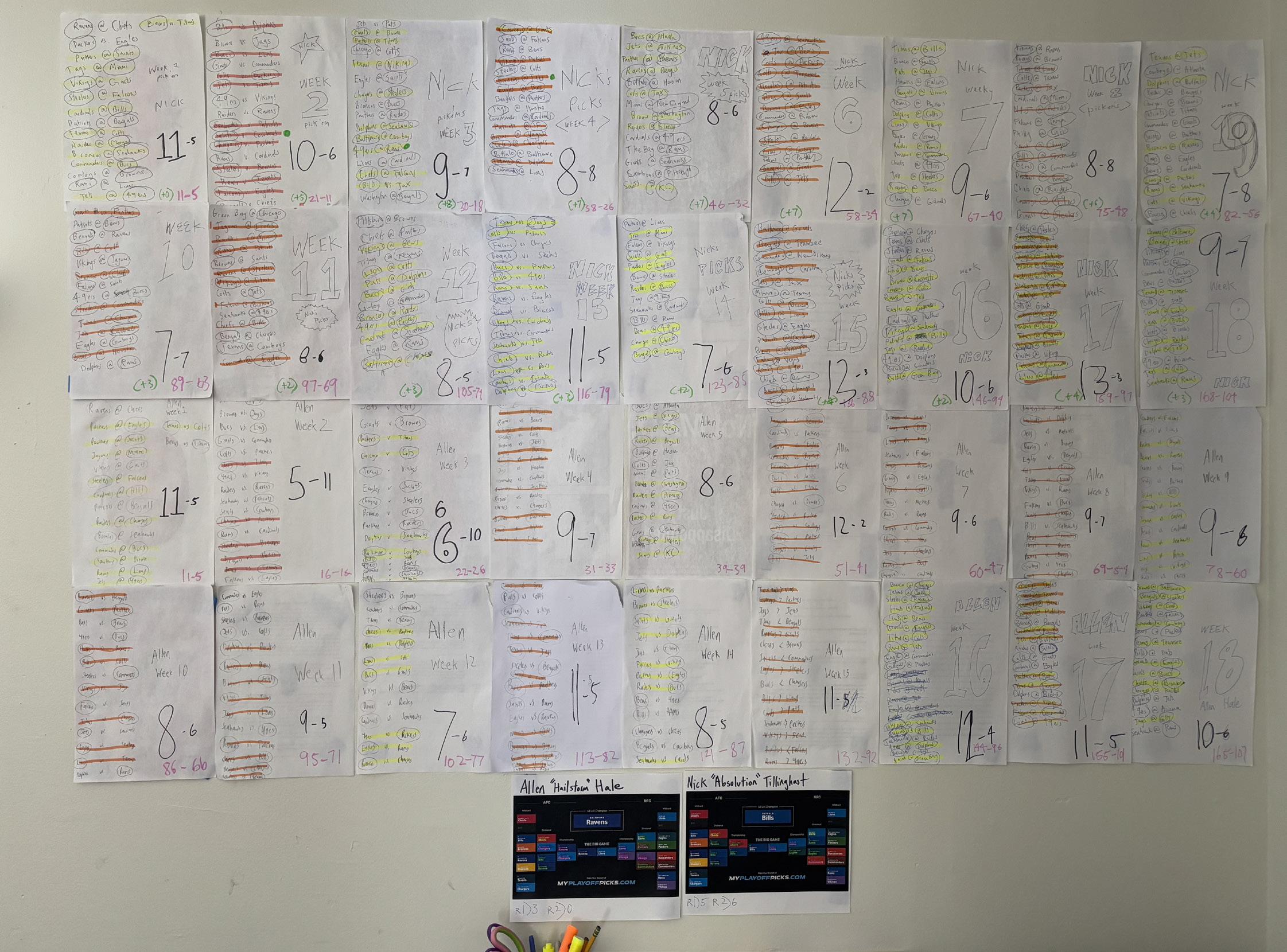
can imagine how the Chiefs vs. Browns game went for me.
Allen and I are not dissimilar prognosticators overall. We typically always picked against the Patriots, picked the Baker Mayfield-Bucs in toss-up spots, and were skeptical of the Aaron Rodgers-Jets experiment. For many weeks, our records were identical, which is not surprising given our similarities: many games, we just picked the same. There were only two options, after all. The result of those games was inherently less interesting. The games each week kind of played out like states in the electoral college: most do not matter, but the ones that do, definitely matter. On a good week, the deciding game for who had the better record was late in the week, either Sunday or Monday Night Football. This ended up being the case fairly often with those being particularly tight match-ups between good teams.
I will say that not all of the picks felt particularly compelling to make, even when we did disagree. There were match-ups that I was never intrigued by but seemed to appear in some form at least once every week: the Raiders, Titans, Jaguars, Saints, or Panthers facing one another. I could not care less. They were all awful this year. If you ever root for a tragically bad sports team and wonder “Gee what do the other sports fans think about us?” just know that your team never crosses my mind. At the end of the regular season, I was two wins behind the worst ESPN expert, which feels like a nice victory. On the other hand, I was 32 wins behind the best. I know some ball, but I am far from a self-proclaimed expert. Give me a few years though—maybe you will see on the experts page for 2038.
The playoffs
The playoffs were an entirely separate picks system from the rest of the season. The picks fatigue had worn in by Week 13, so we went with March-Madness-style brackets for the playoffs, knocking the rest of the season in one go.
Picking a regular season game-winner right is not hard, but picking the right Super Bowl champion is tricky and requires some legitimate thinking, so it helped to have tracked the regular season so meticulously. Of course, both of our brackets were pretty off by the end of the postseason. I (Nick) took the Bills against the Lions for the final, and Allen took the Ravens and Lions, neatly mirroring our regular season biases. Brackets are a format where being wildly off is pretty common, but after having predicted the entire season, it still sucked to be so off about the Super Bowl matchup, especially with the Lions not passing the divisional round.
When it came around to Super Bowl Sunday, we made an informal prediction about who would win: the Chiefs, definitively. We then watched them lose, definitively. After months of scrutiny, we still sorely misunderstood the NFL.
Conclusion
It might seem like this exercise was some sort of strange gateway into sports betting, which neither of us ended up doing. Sports betting is similarly compelling though in that there is a record attached to the prediction: In the case of betting, money is lost or won. For us, it was just pieces of paper with numbers on them. Sports betting brings predictions, however insidiously, beyond vacuous chatter. A better comparison for our scheme is “Inside the NBA’s” post-it notes segment, which is hilarious in its minuteness. The Inside Guys squirm as Ernie Johnson reads aloud their offbase predictions written on tiny sticky notes. All of this to say: It does not take large sums of money to feel the sting of being wrong.
Brewers Ballin’: Fitzgerald leads Brewers’ offense
Our goal with Brewers Ballin’ is to feature Vassar athletes who starred for their team the week previous to publishing. If you would like to nominate an athlete, please email hfrance@vassar.edu.
To
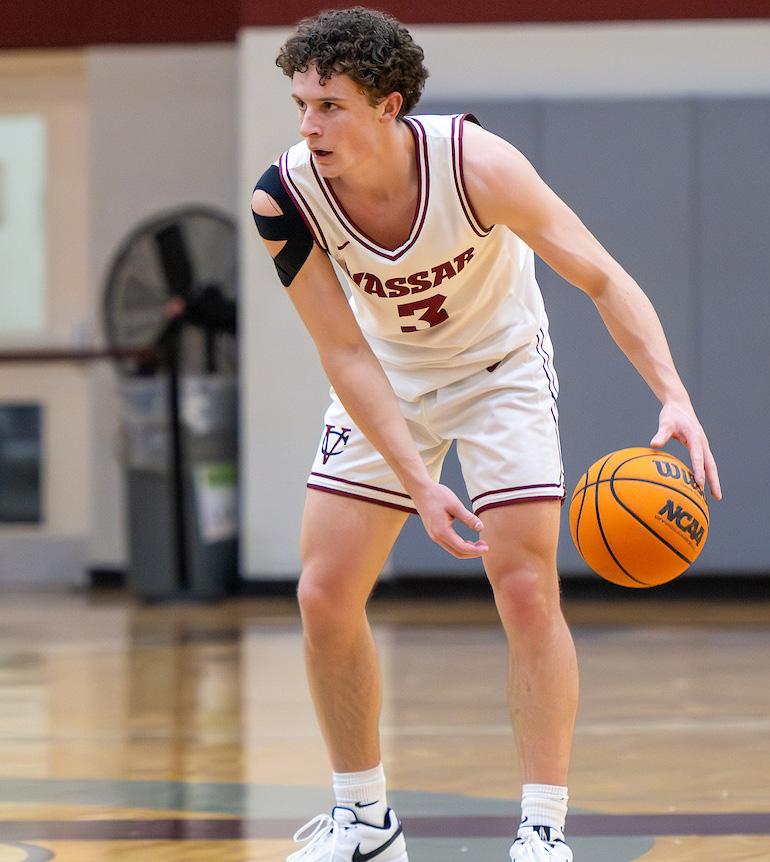
Brewers Ballin’
Name: Shea Fitzgerald
Year: Sophomore
Team: Men’s basketball
Stats: The sophomore guard has put together a strong offensive campaign this season, playing a critical role in Vassar’s Liberty-League-leading 77.1 points-per-game. Fitzgerald was critical in the Brewers two big wins last weekend, which collectively secured top position in the Liberty League. In the decisive match against RPI, Fitzgerald netted 18 points on 6-13 shooting in the 66-48 win. Throughout the season, the Vassar Athletics Rookie-of-the-Year runner-up has been a force. Fitzgerald is first in the Liberty League in points-per-game with 20.8, third in the league in field goal percentage at .435, third in the league in three-point-field goal percentage at .372 and third in the league in steals-per-game at 2.0.
Statement: “I think our success so far can be attributed to every member of the team’s consistent hard work and trust in one another. All of us are bought into a common goal of winning and we are all willing to make sacrifices to achieve that goal. We are a tight-knit group on and off the court and I think that has really benefited us this season.”
Recently in Vassar Brewers sports
Men’s Volleyball Cruises to 11-0
The men’s volleyball team kept their win streak going with a victory this past weekend. On Friday, the squad will face a strong MIT at home.
Men’s Basketball Finds Top Spot in Liberty League
With a big win over RPI, the men’s basketball squad secured the top spot in the Liberty League with a record of 16-7.
Haley Schoenegge breaks her own school record
At the famous Valentine Invitational Indoor Meet, the sophomore set a new school record of 4:48.18.
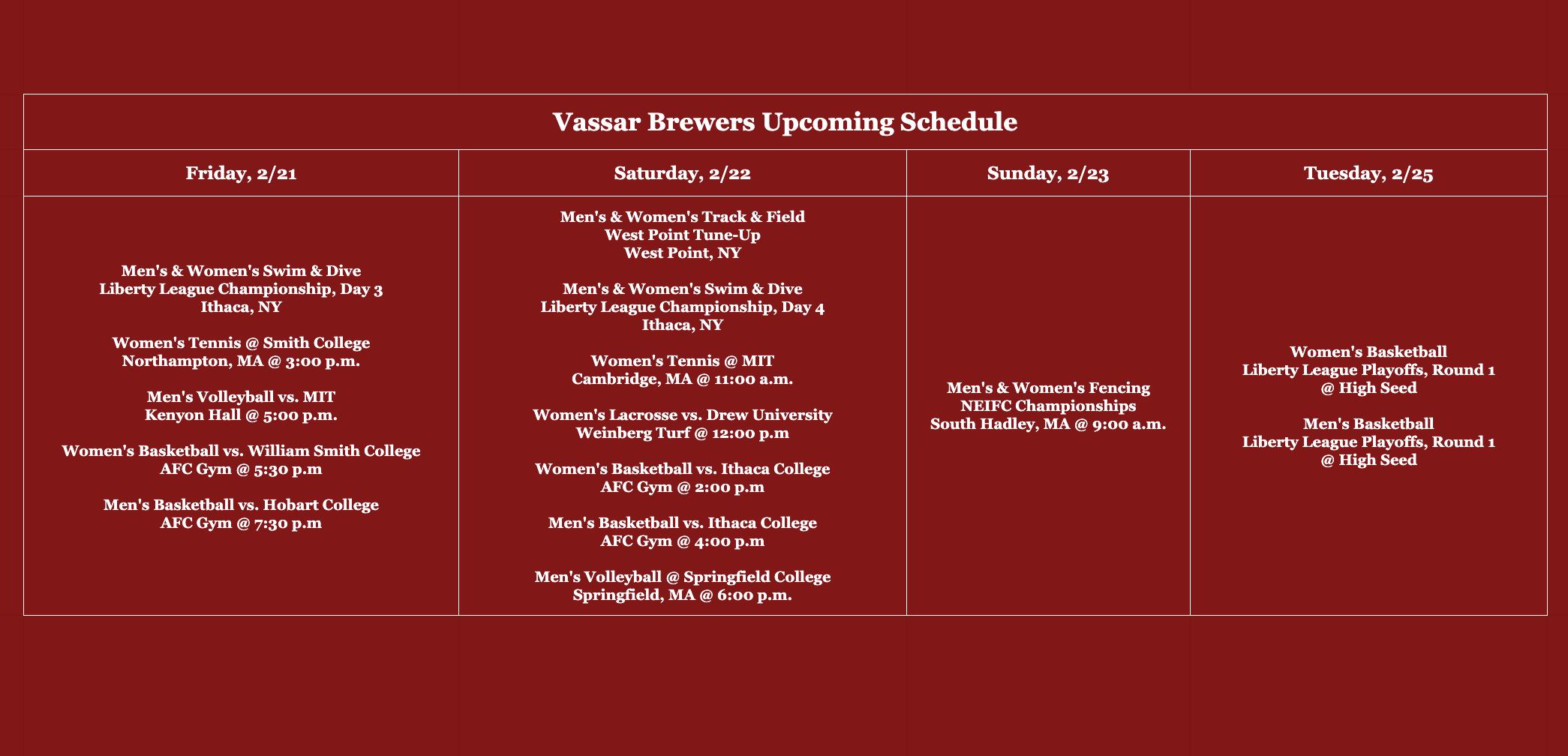
Category Match
By Sadie Keesbury
In the word bank below, there are 16 words that belong to four categories. Each word belongs to only one category. You don’t know which words belong together, nor do you know what the categories are! Try to find similarities between them, and place them into four categories below. Answers (which words belong together, as well as the categories they belong to) will be revealed in next week’s issue. Have fun!
Example category:
Toyota Car Models COROLLA PRIUS TACOMA HIGHLANDER
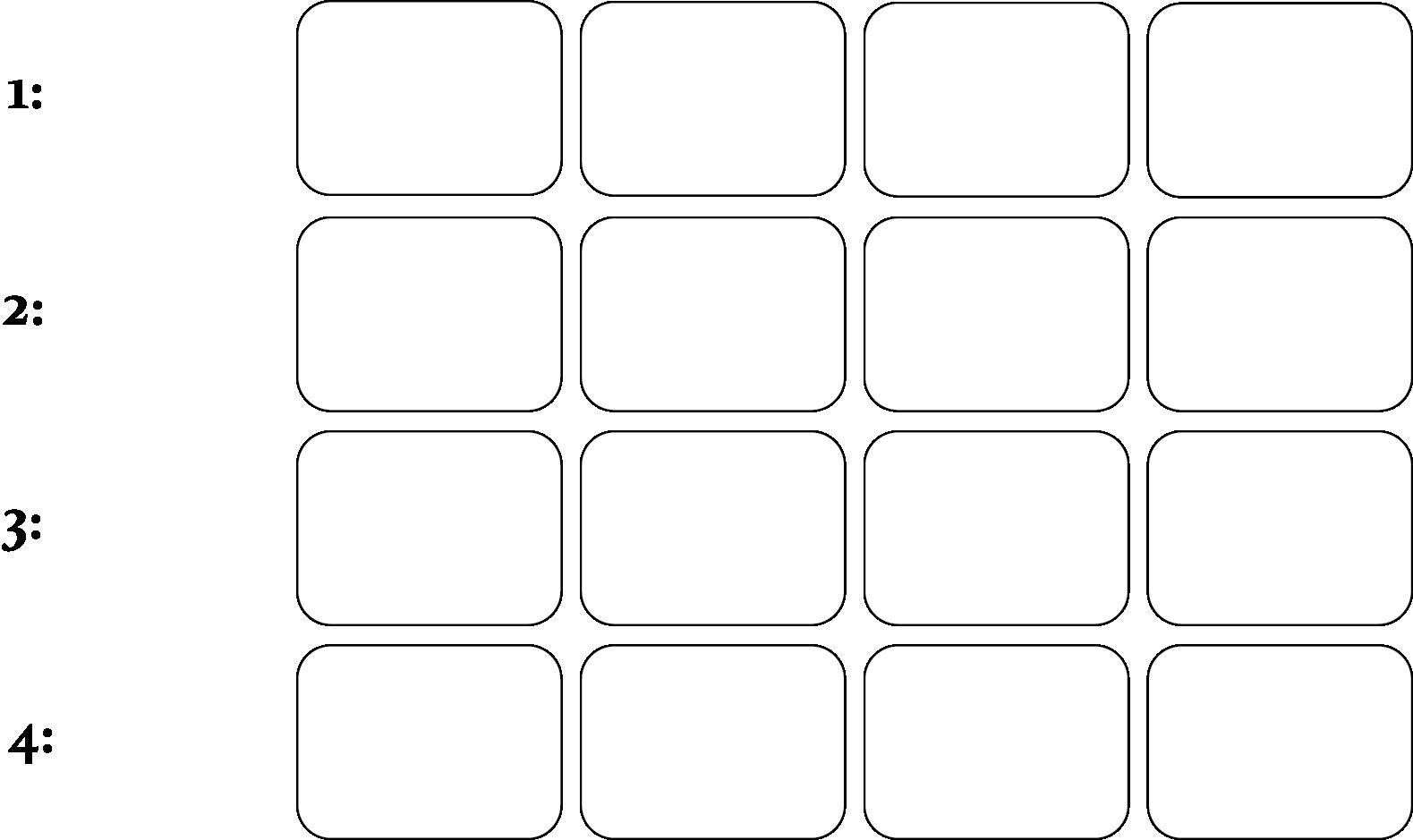
“Debut Mini”
By Carina Cole and Kate Billow
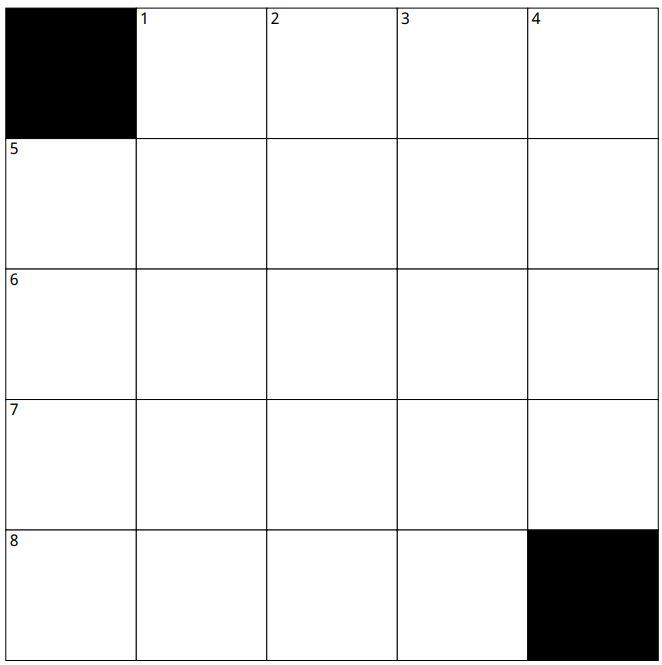
1. Sexiest male vice president
Funny bone, in other words
What a gal in the
80s might do to her hair
7. Domesticates, as in a lion
8. USA-oriented music awards show
“We’ve Got Chemistry”
By Sadie Keesbury
To shine or shimmer
Sexiest president
A bouquet of red ___
Female sheep,
WORD BANK
TANG
TROUT GLADDER
“At Last” singer James
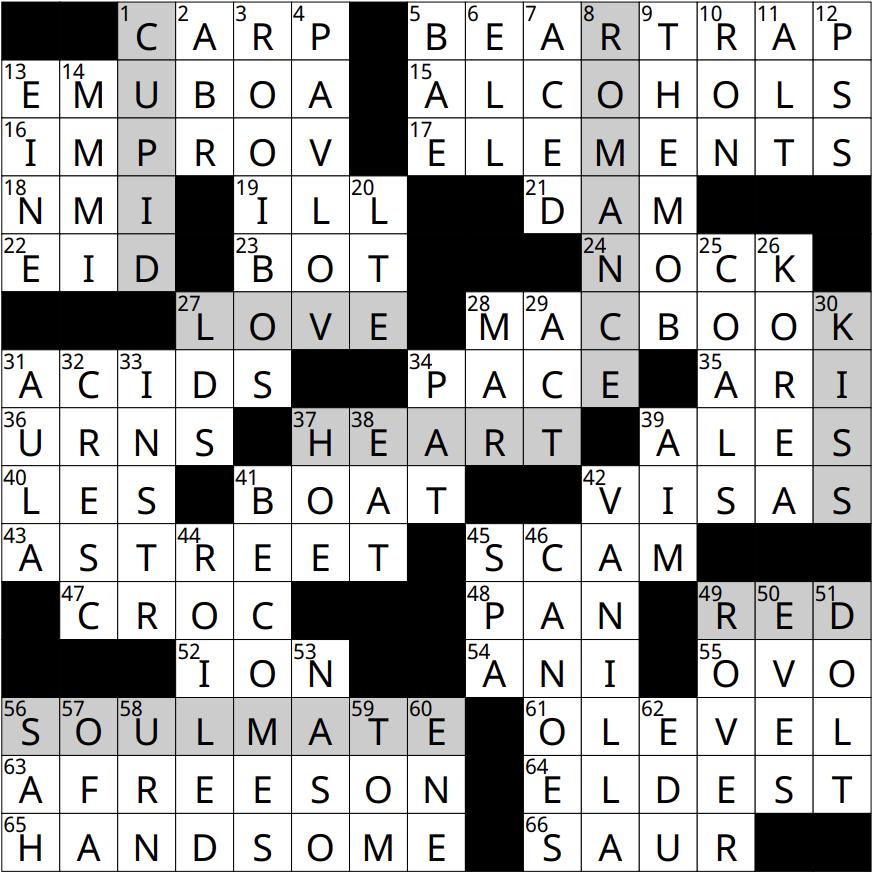
The Miscellany Crossword
“Sound Logic”
By Finley Greene

“Wenis” location
Game console released in
Calls (for)
Recent two-time veep
Some birthstones
Fuses
Something that shouldn’t be worn out?
who borrows
Country with a Supreme Leader
Biblical evils
Centers 52 Piece of content on Insta
Composer Brian 54 They might help with a torn A.C.L.
55 Australian artist with nine Grammy nominations
